Note: this is the fourth and final article about my recent train journey through Bosnia and Herzegovina. Read the first article here, the second article here and the third article here.
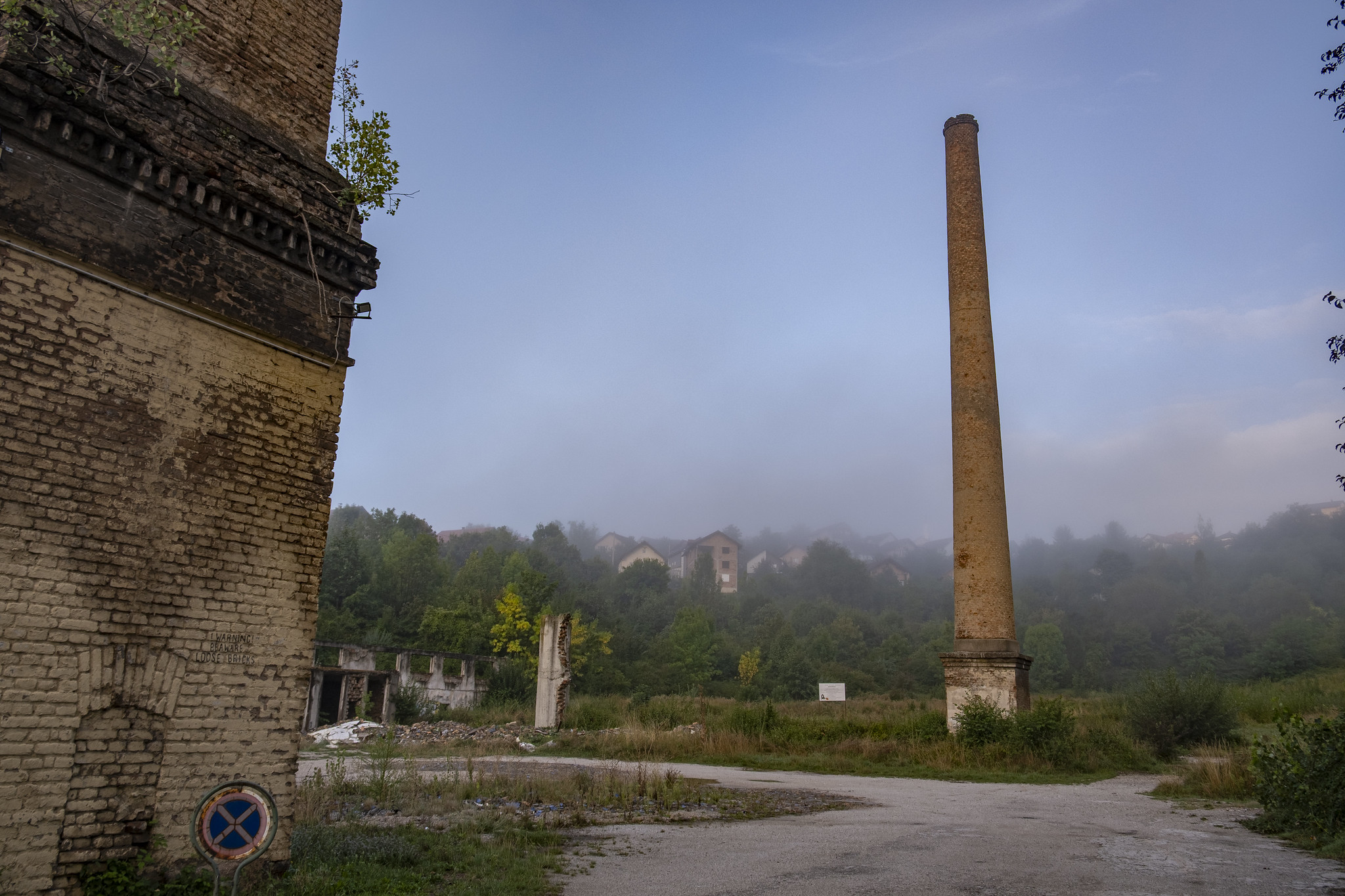
I wake up early for the third and final day of my rail trip across BiH. As I leave my hotel, I realize I’m among the ruins of the Sarajevo brickworks. Only two tall chimneys stand. A tiny note on one of the chimneys says WARNING BEWARE LOOSE BRICKS. The site looks eerily magical in the early morning mist. I make my way to Sarajevo train station.
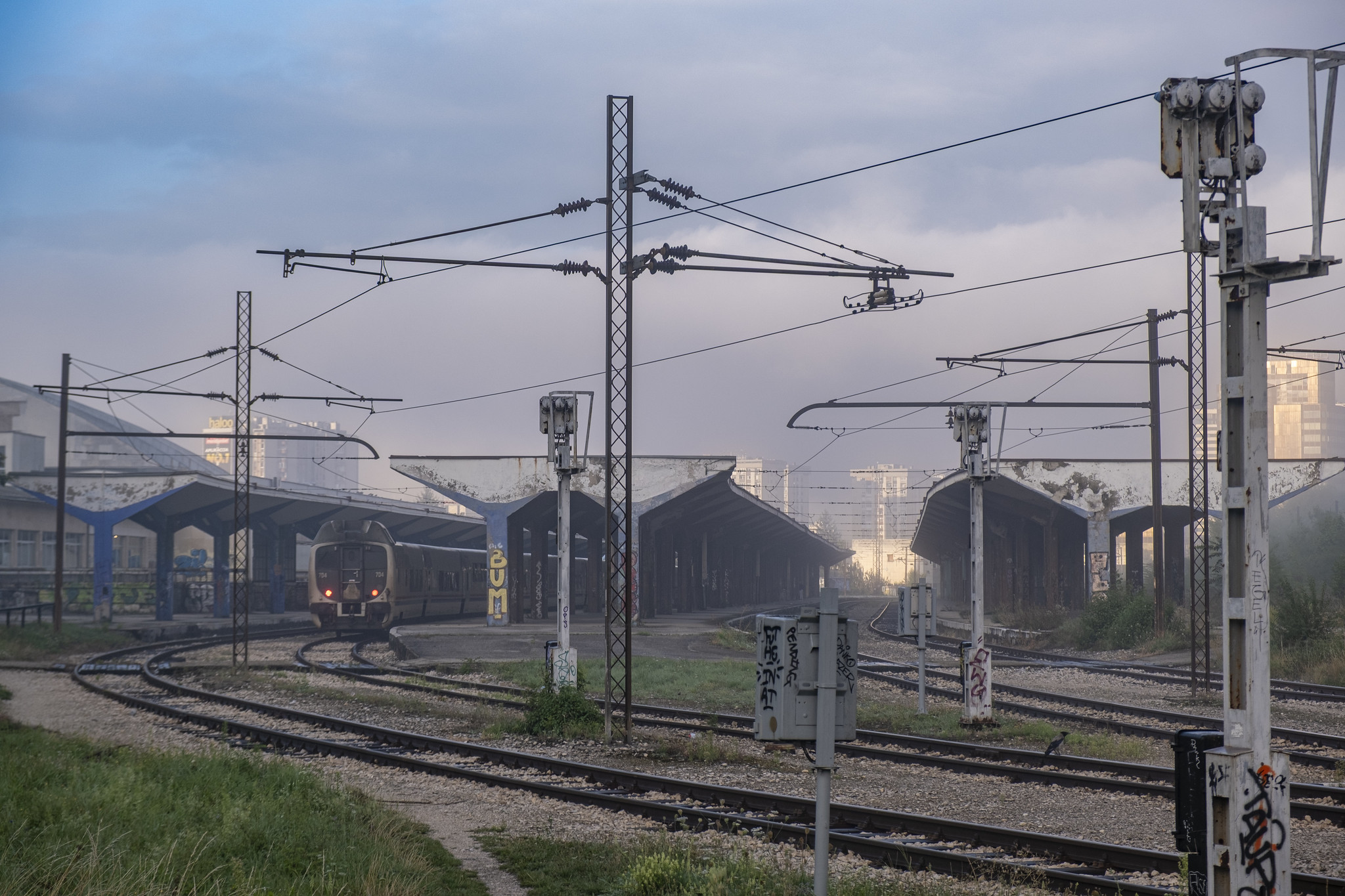
As I approach the station, I can already see my train. The newish Talgo VII trainset already looks a bit out of place here, compared to the old rolling stock I traveled on for the last two days. These Talgo trainsets were delivered to ŽFBH in 2010. Due to issue beyond the scope of this article it took years until they finally started running. They even ran service between Sarajevo and Banja Luka between 2017 and 2020! However, since the pandemic these modern trainsets only run Sarajevo – Mostar – Čapljina service, with weekend extensions to Ploče in Croatia during the summer.
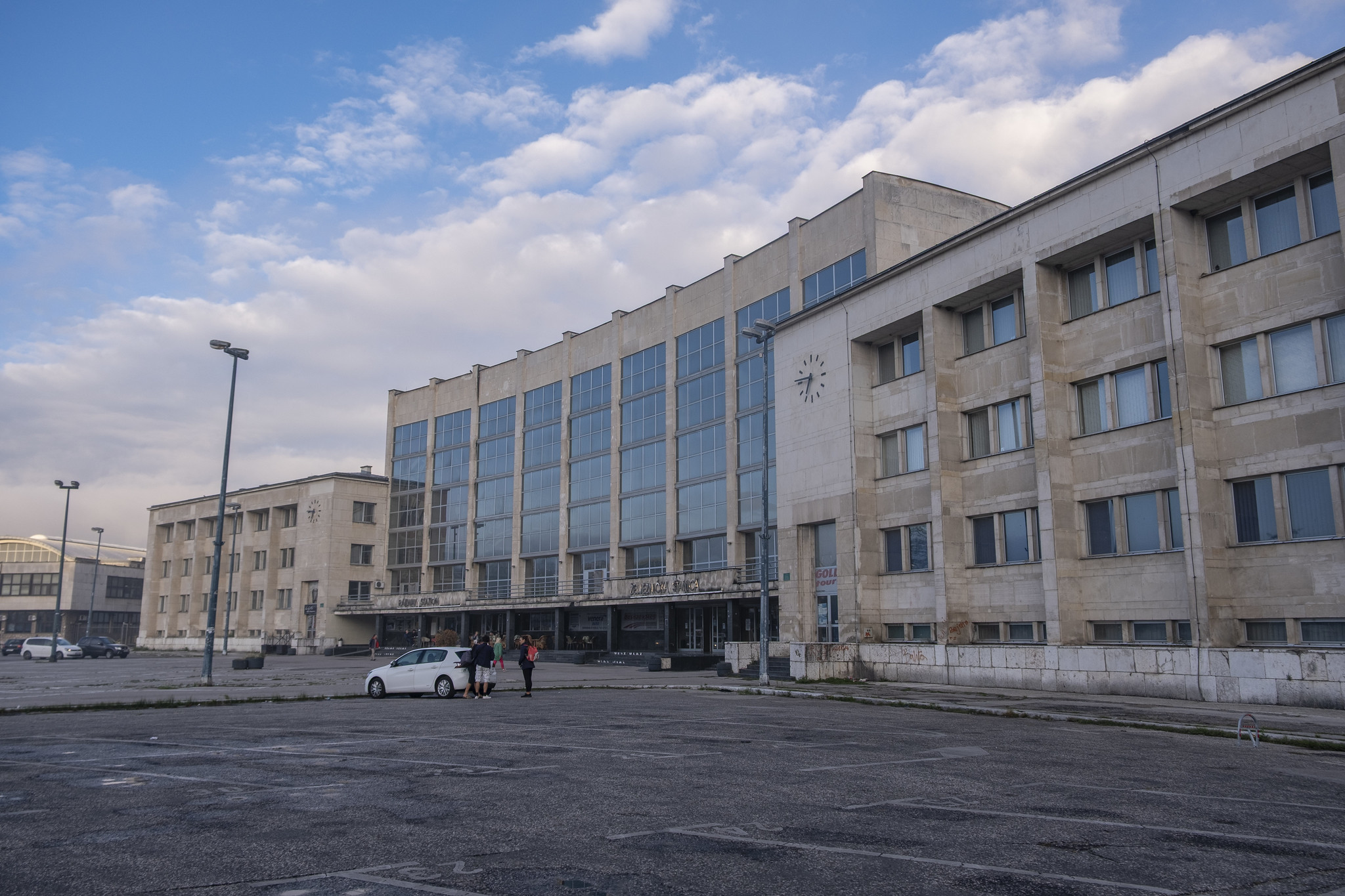
I reach the station entrance and admire the beautiful lines of Sarajevo’s main train station. This station hall opened in 1953, giving it a somewhat unique look compared to other large stations in the Balkans. A plaque inside commemorates the completion of the Šamac – Sarajevo railway in 1947 (a portion of which I took from Maglaj to Sarajevo). The opening of this railway brought standard gauge to Sarajevo for the first time, replacing the old narrow gauge Sarajevo station as the main train station. The narrow gauge Sarajevo station closed in 1966.
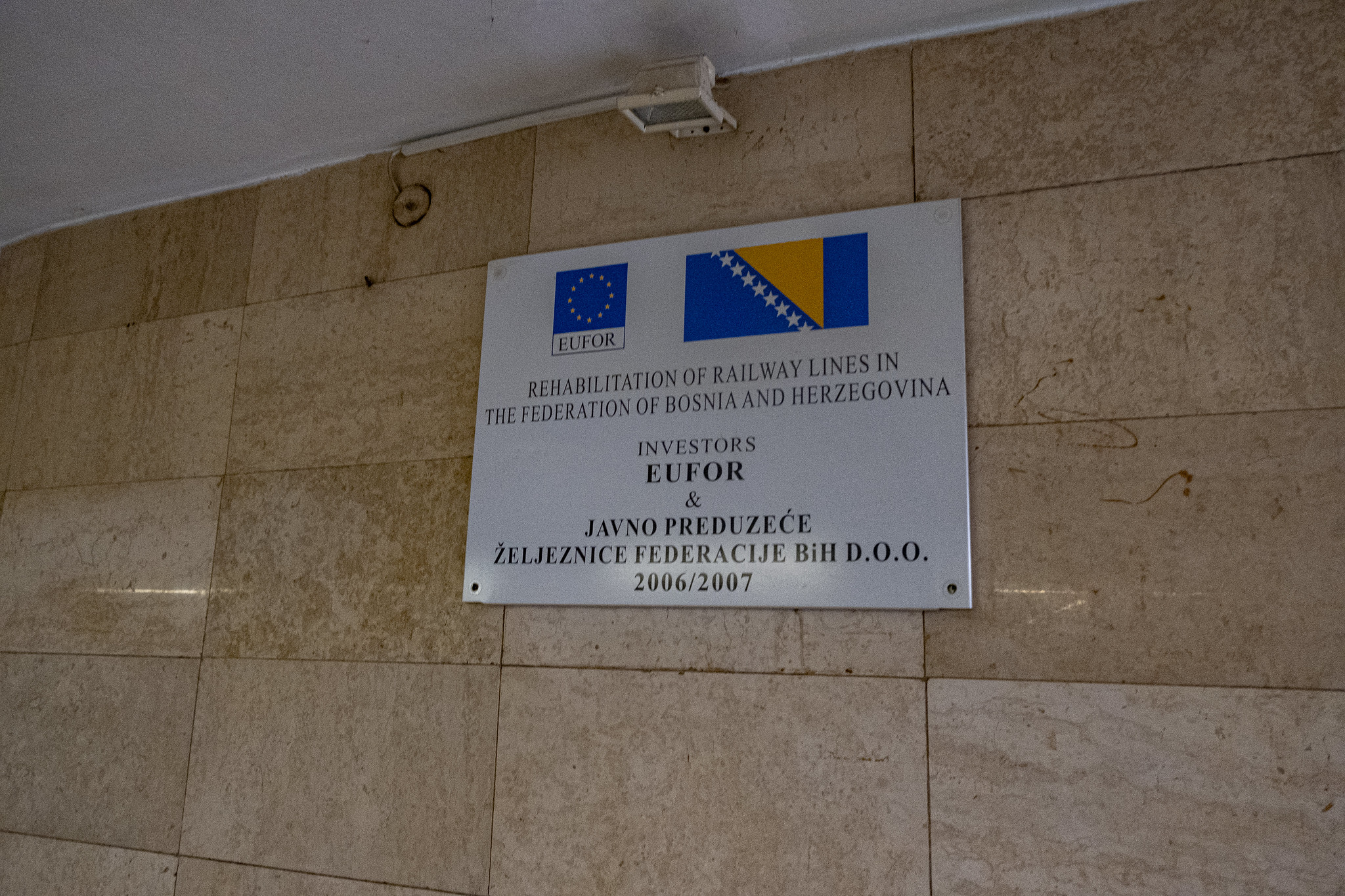
Another plaque commemorates the rehabilitation of railway lines in the Federation of Bosnia and Herzegovina, performed in 2006 and 2007 with funds from EUFOR, the European Union military deployment in BiH. Yet another plaque commemorates the construction of Vrpolje – Sarajevo and Sarajevo – Ploče railroads. I’m surprised to see the name Ploče on a plaque from 1966, considering it was called Kardeljevo until 1990. I later discover that the town changed names multiple times, carrying the name Kardeljevo from 1950 – 1954, Ploče from 1954 – 1980, Kardeljevo again from 1980 until 1990, before it was reverted once again to Ploče.
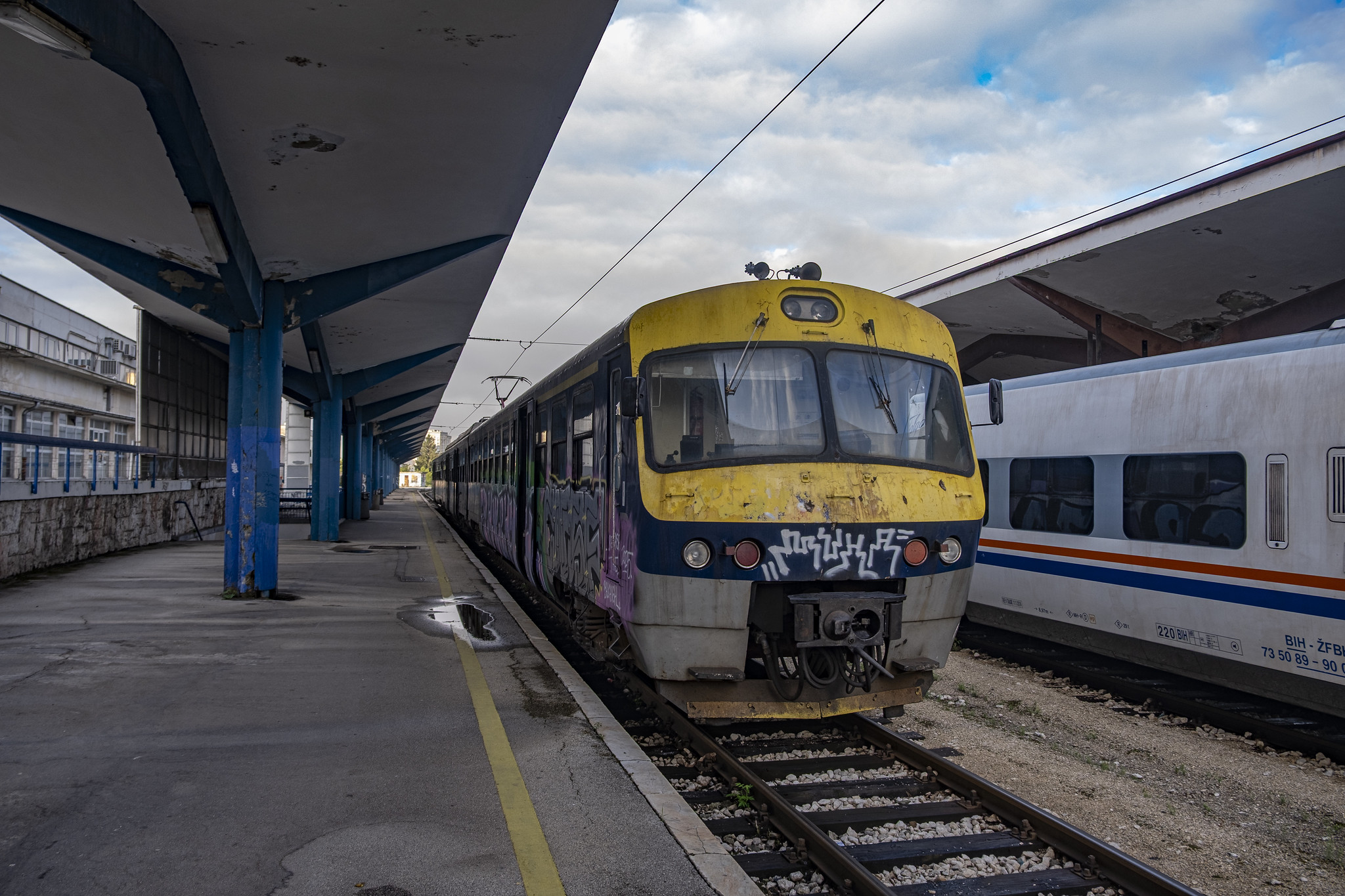
Before I climb onto my platform, I notice a familiar sight – a Ganz Mávag train, the former JŽ 411 series EMV. While this particular train has seen better days, its blue and yellow livery is still reminiscent of the Sarajevo Winter Olympics in 1984, when it was used on the prestigious Olimpik express service. Nowadays these EMVs are used on local commuter service between Sarajevo and Pazarić.
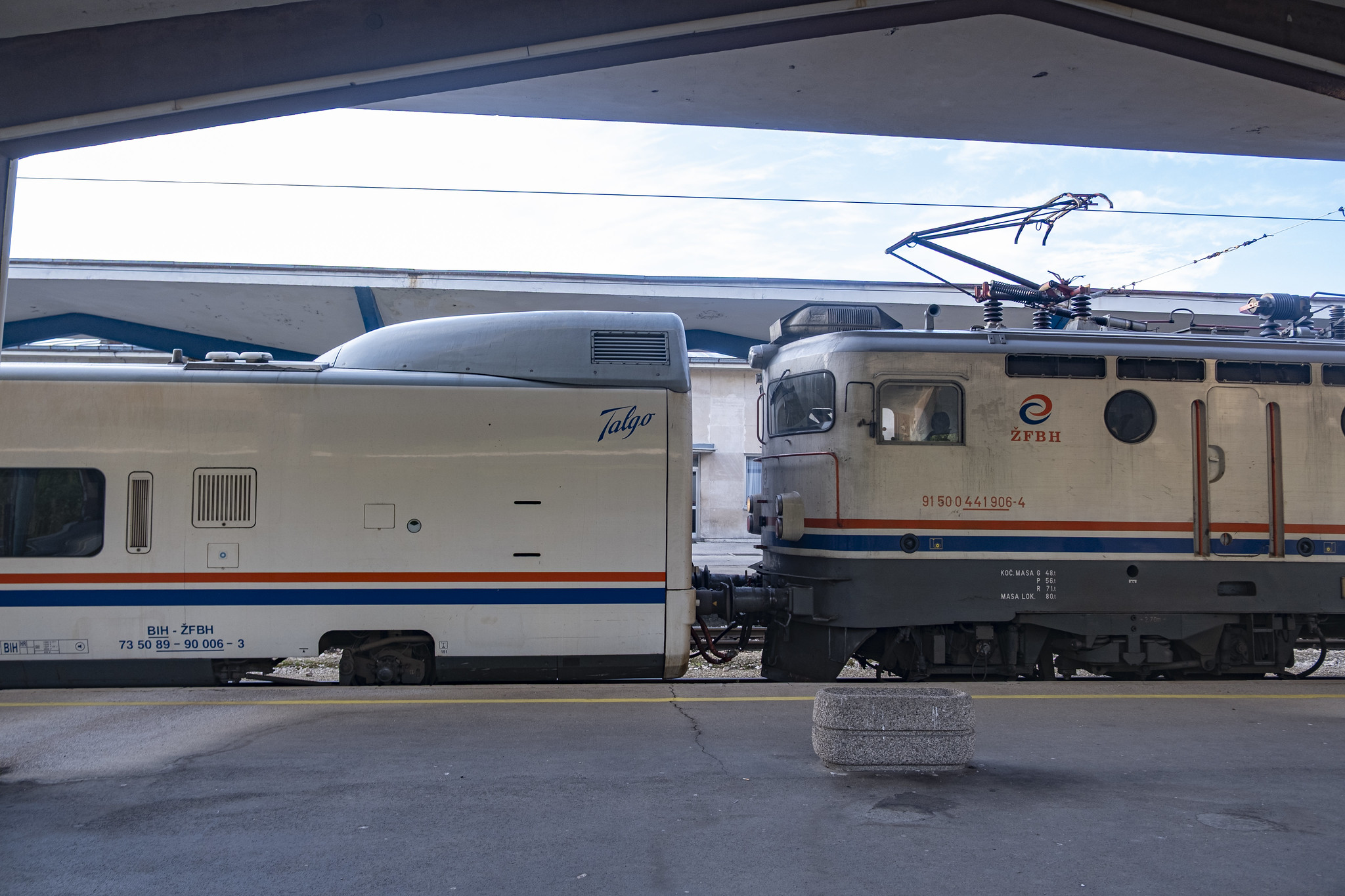
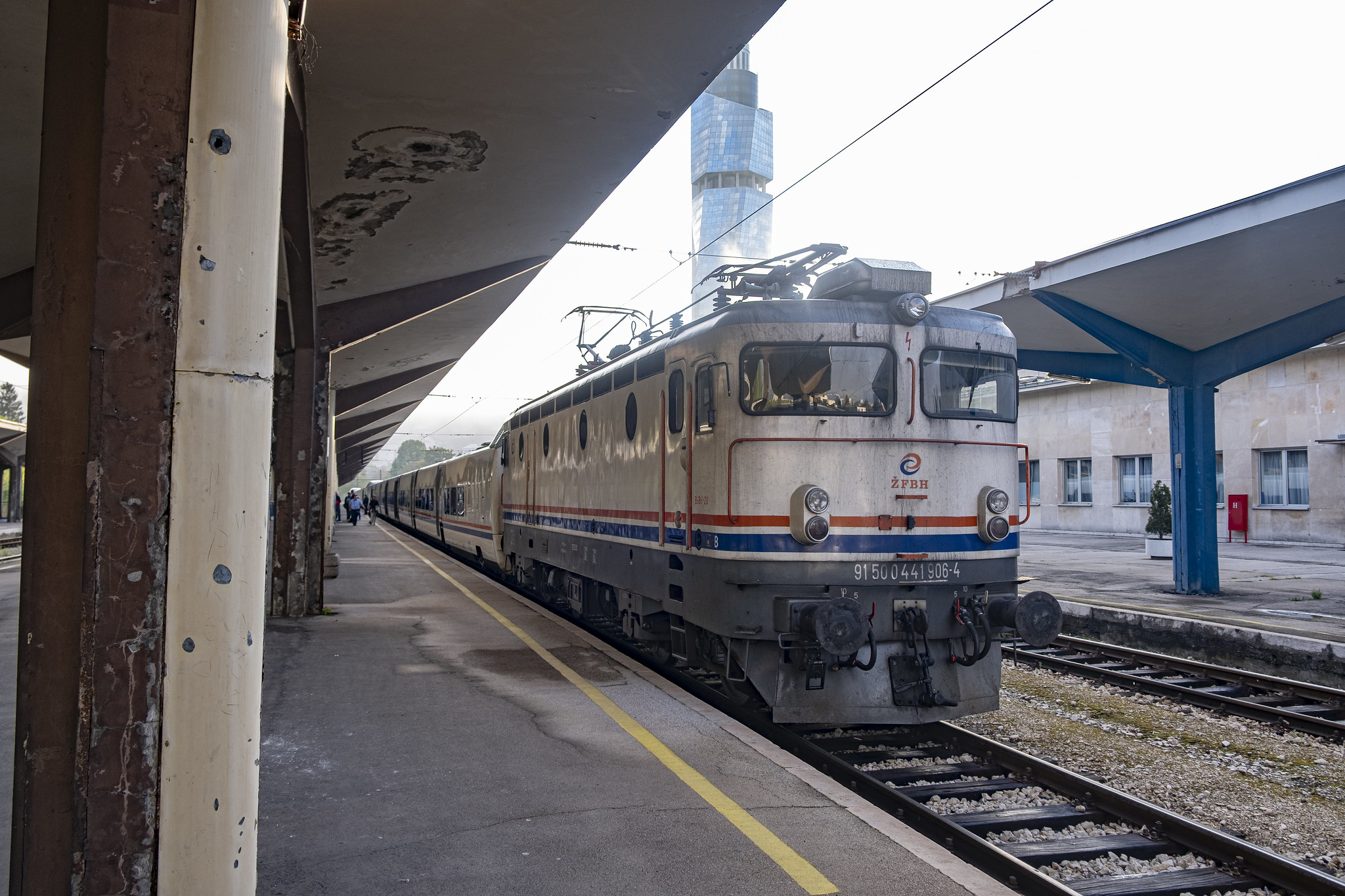
Train 5: Sarajevo to Ploče (ŽFBH) 7:15am – 10:36am
Our train is absolutely ginormous – two Talgo VII trainsets with a total of 18 cars. It is pulled by yet another Yugoslav built ASEA electric locomotive, this time in ŽFBH livery matching the Talgo trainset. There are a lot of folks taking this train so I hurry inside to find a seat since there is no assigned seating.
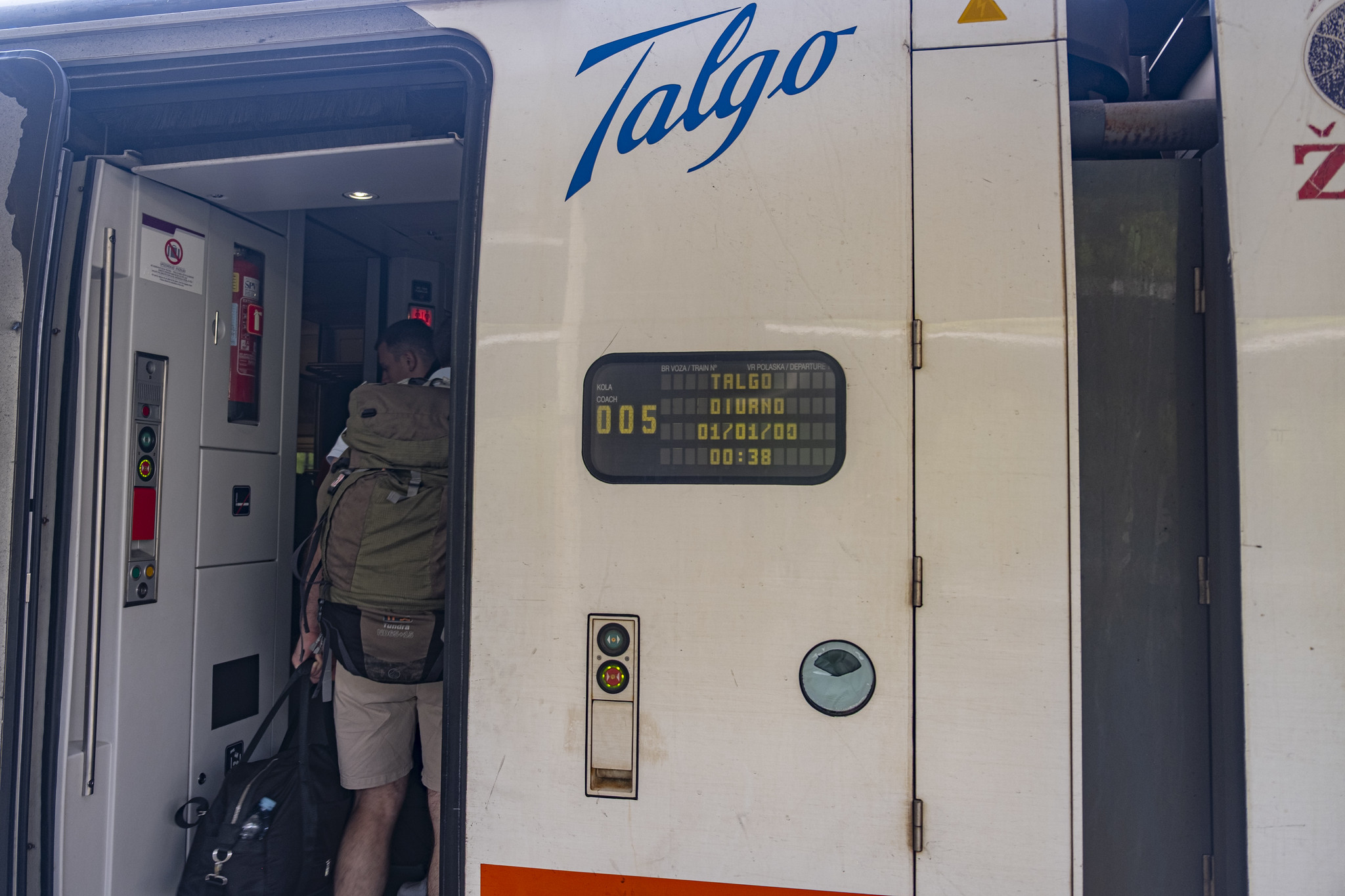
Unfortunately, the displays on the outside of the train aren’t really functional beyond showing car numbers. There are many foreign visitors aboard, but also locals from Sarajevo going for a day on the coast or traveling to Mostar. I find a seat and the train leaves right on schedule at 7:15.
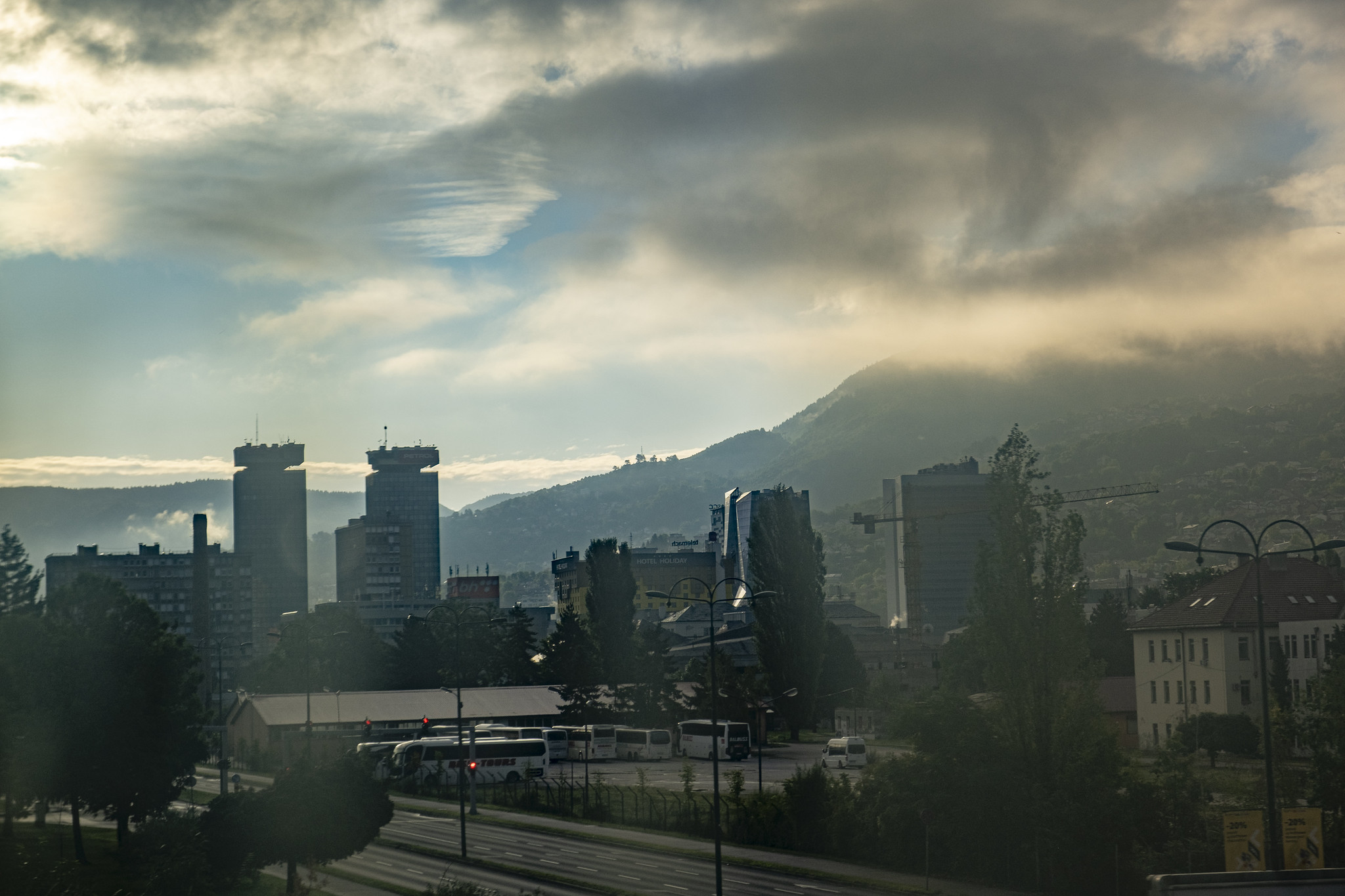
After the charming, but grimy old trains I traveled on for the last 2 days, the Talgo trainset feels very out of place. You can tell that ŽFBiH considers this their flagship service. Everything is clean and tidy, and the conductor announces some of the stops on the PA. Unfortunately the visual announcement system doesn’t seem to be working in most cars. A few show the car number and train speed.
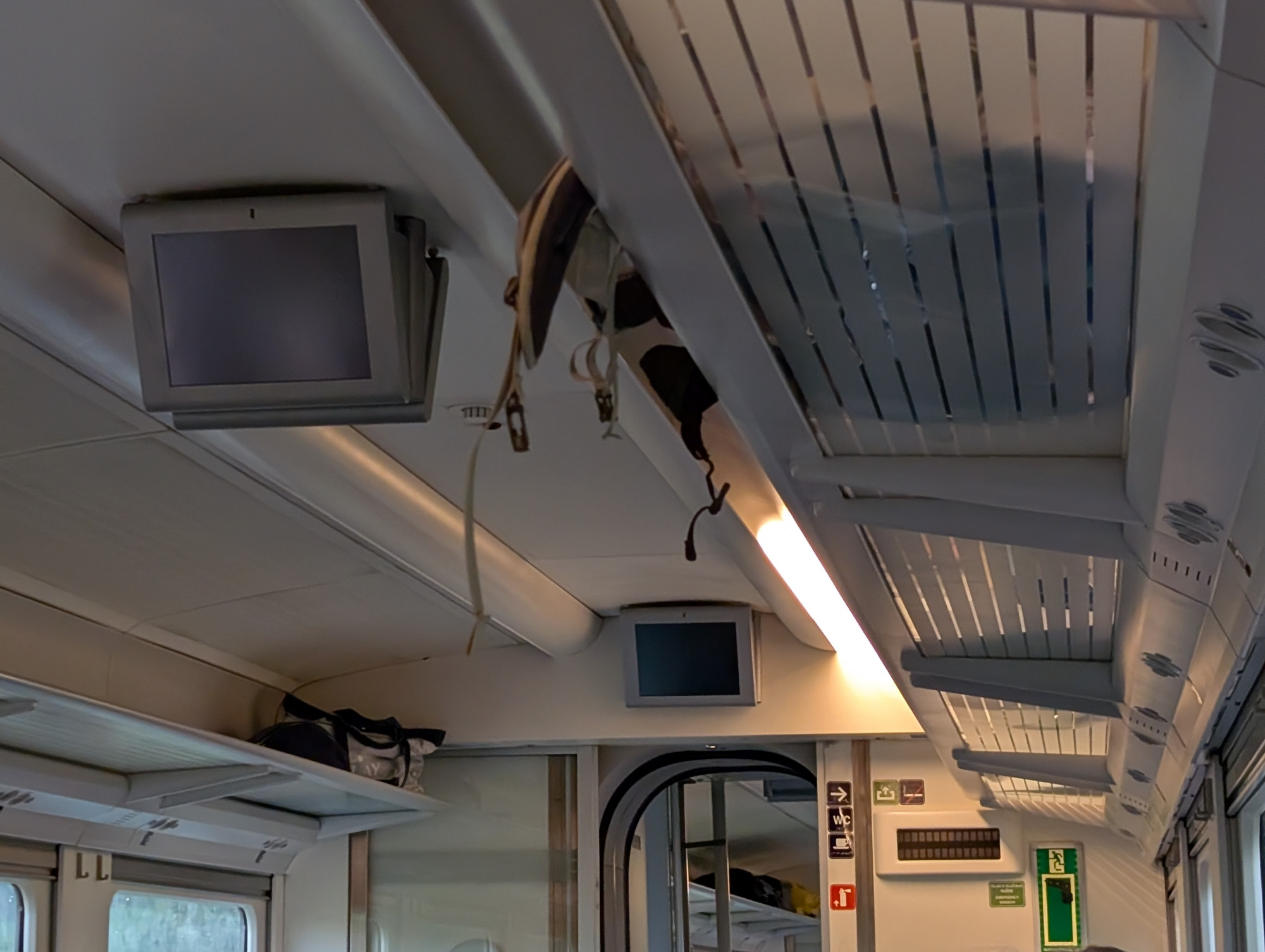
I browse through my 1990/1991 timetable and notice that this train is scheduled very similarly to the the train 951, the Tuzla – Sarajevo – Kardeljevo (Ploče) service in the 1990/1991 timetable. Even the departure from Sarajevo and arrival in Ploče are almost the same. I make a note of this since I know we have to cross a border into the Schengen area – it seems unlikely that we will make the same time.
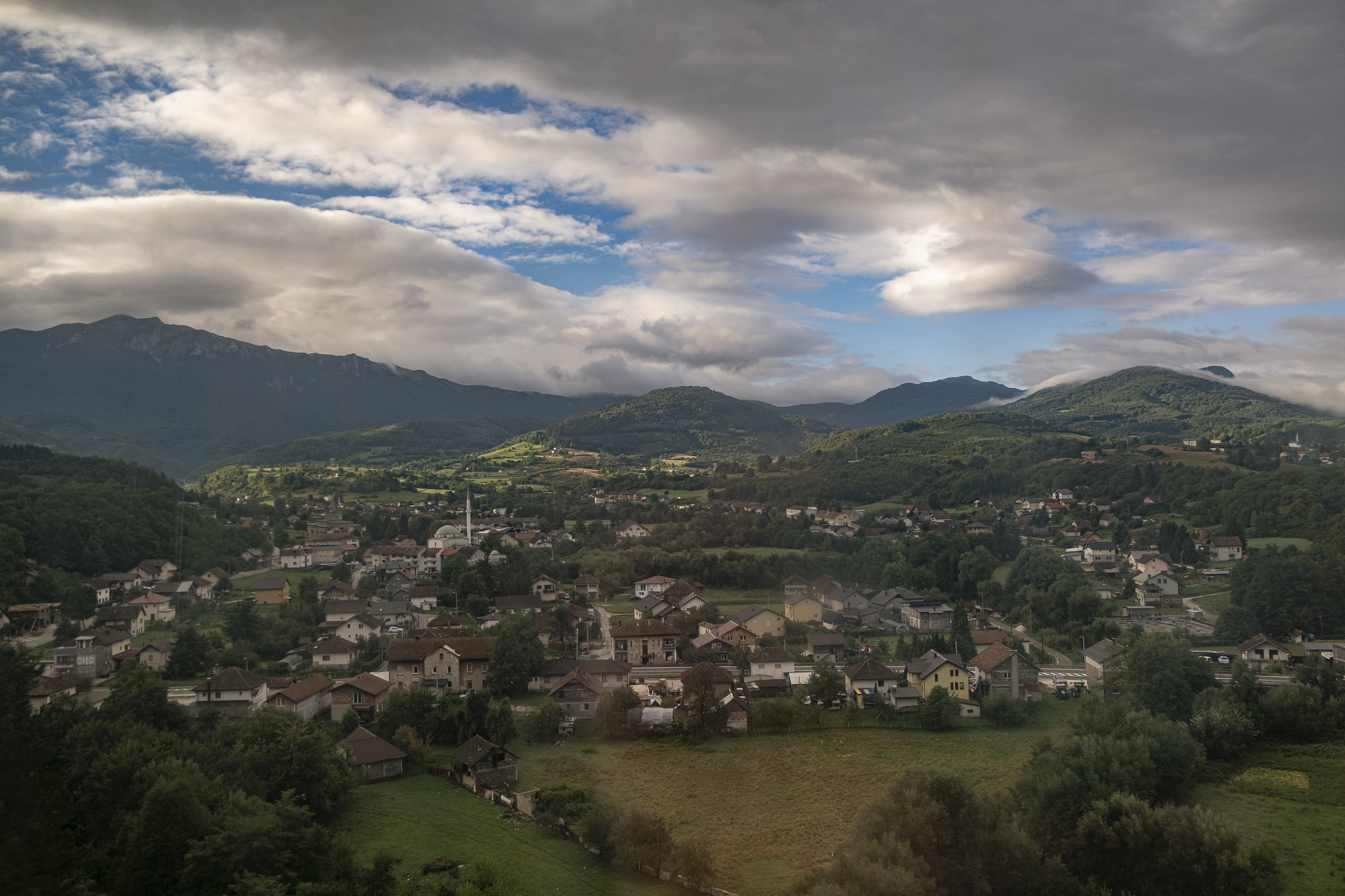
I put aside the timetable and enjoy the view. The sun starts to come out as the train climbs past Pazarić. The train climbs up high into the mountains, then it goes back down into the valley near Konjic. The views are stunning and there are countless bridges and tunnels.
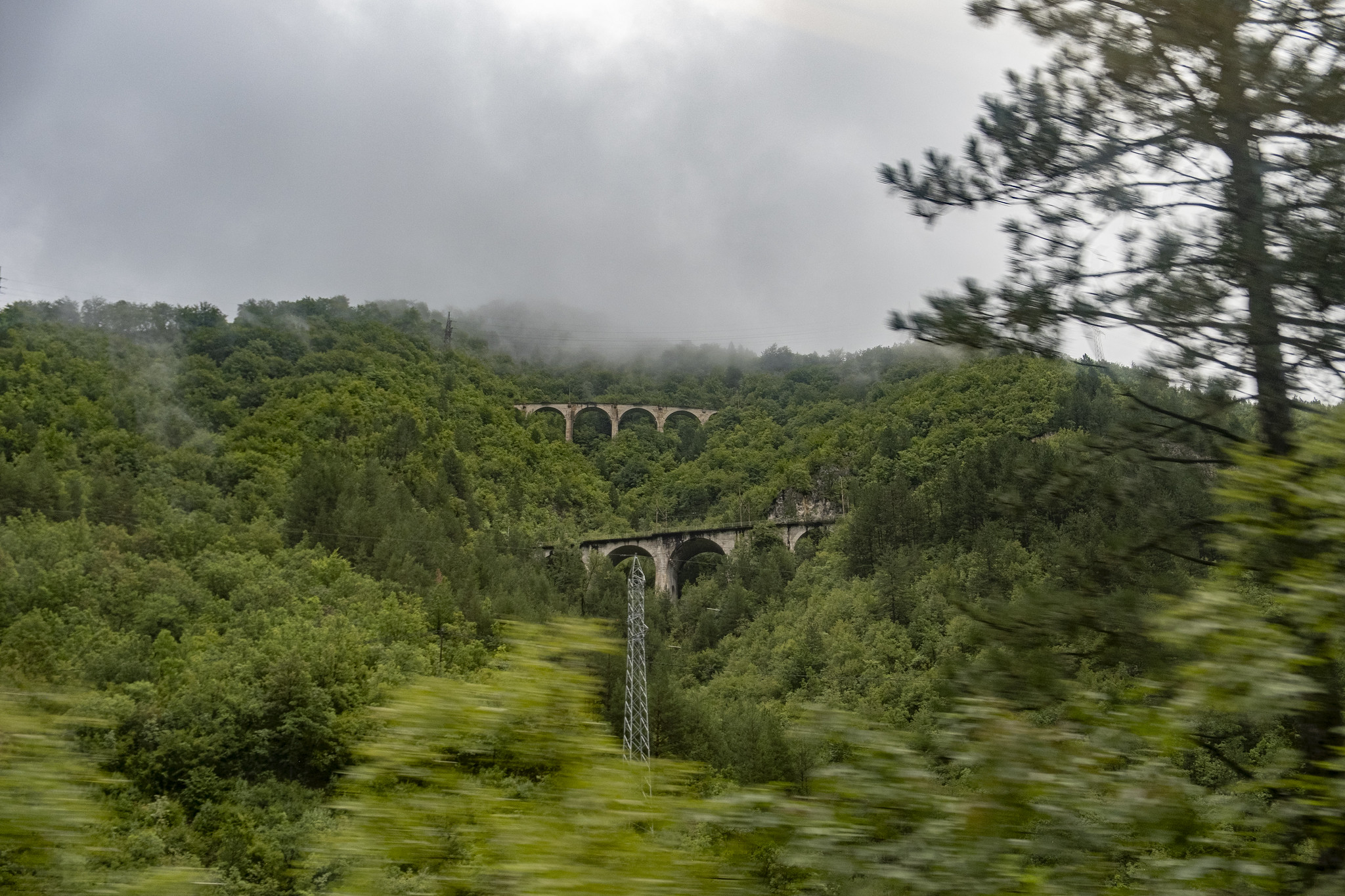
At Konjic we pass another Talgo trainset. As we get near Jablanica, I realize that we’re passing through the area that saw horrific floods and mudslides last year. 27 people died in this tragedy which may have been caused by the operation of an illegal quarry. This railroad was out of commission for months.
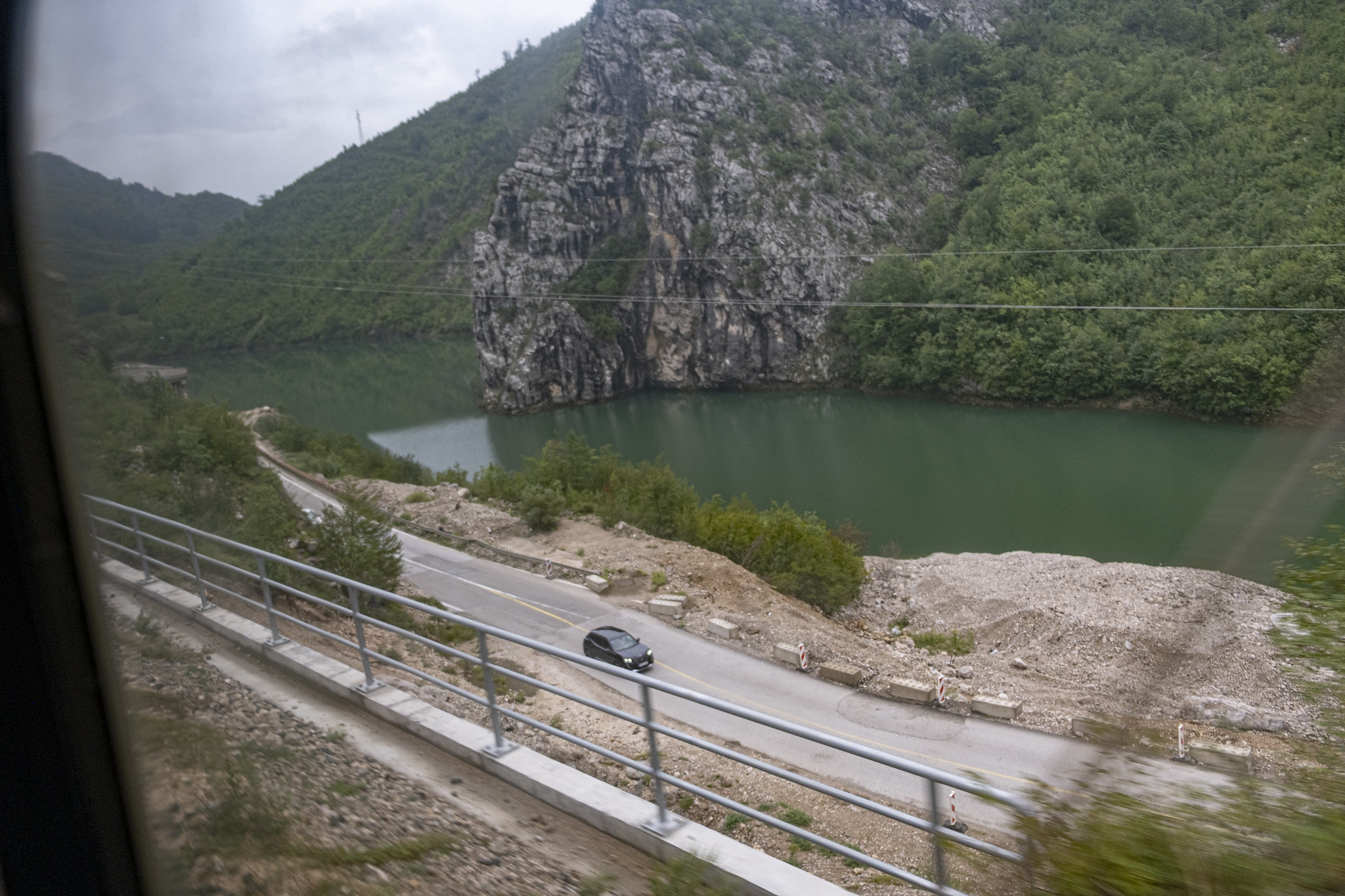
As the train passes through this area of incredible natural beauty I think about the inseparable connection between the war 30 years ago and the political corruption and governing dysfunction that make life difficult and dangerous in 2025. Ultimately the reasons that prevent trains from crossing into the other BiH entity, let alone to other countries, are the same ones that cause such horrific loss of life in natural disasters like the 2024 floods. Passing over the replacement railroad bridge which took 4 months to build, I also think about the strange bending of time and space one experiences riding on this railroad. Šamac – Sarajevo railroad, 242km long, was built in less than 8 months by 200,000 volunteers. There’s no way to fairly compare construction in 1947 and 2025, but it is striking that it took 4 months to restore service on this railroad, suspending shipping through the port of Ploče and costing millions of euros in lost revenue. But nothing compares to the loss of life. As the train passes the area affected by the floods, I think of the people who died here.
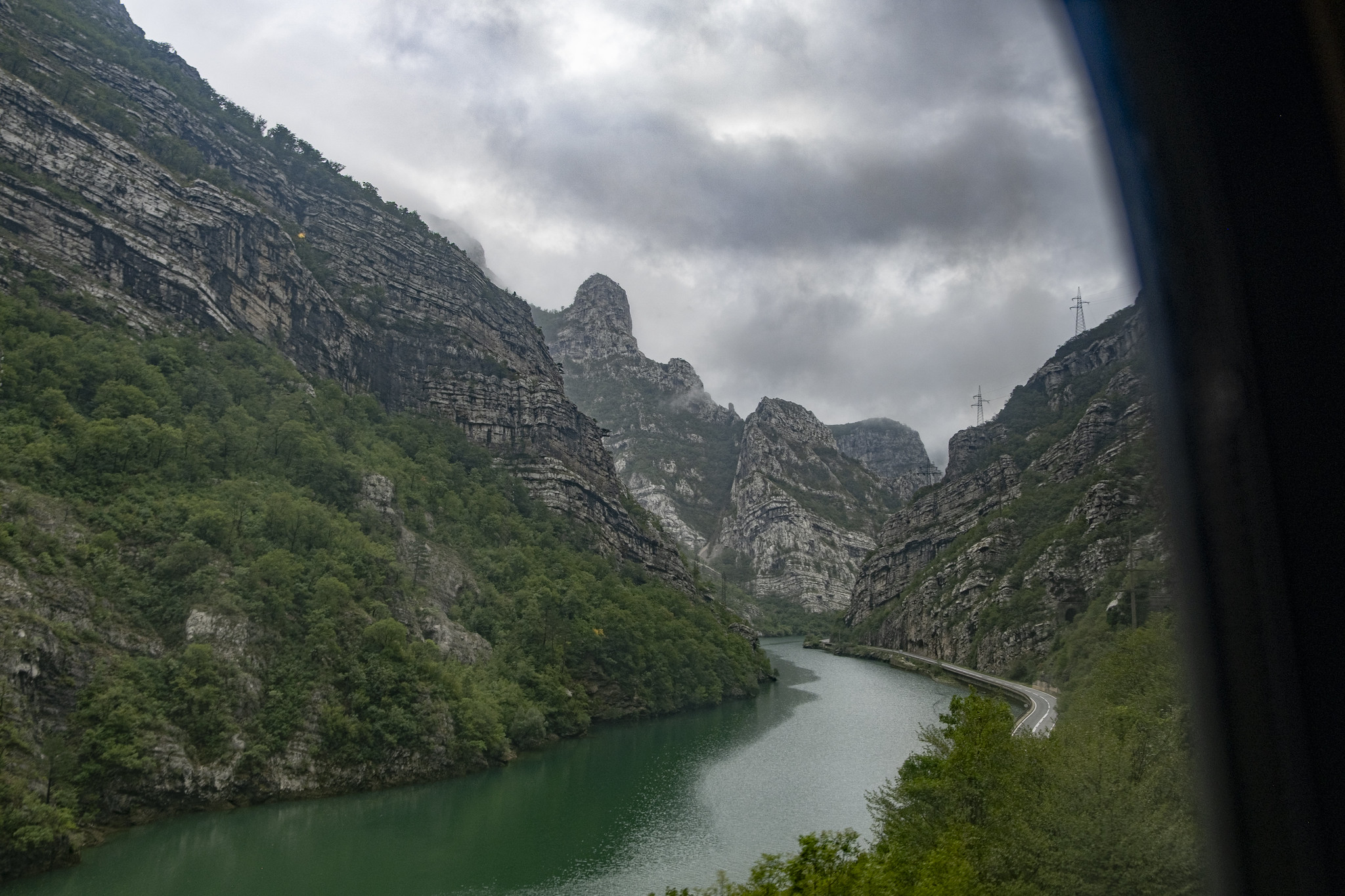
We are now in the Neretva river gorge and it is hard to put into words how stunningly beautiful the sight is. The massive, tall rocks rise above the green river. As the train moves in and out of long tunnels it’s hard to know where to look. This is truly a unique train trip.
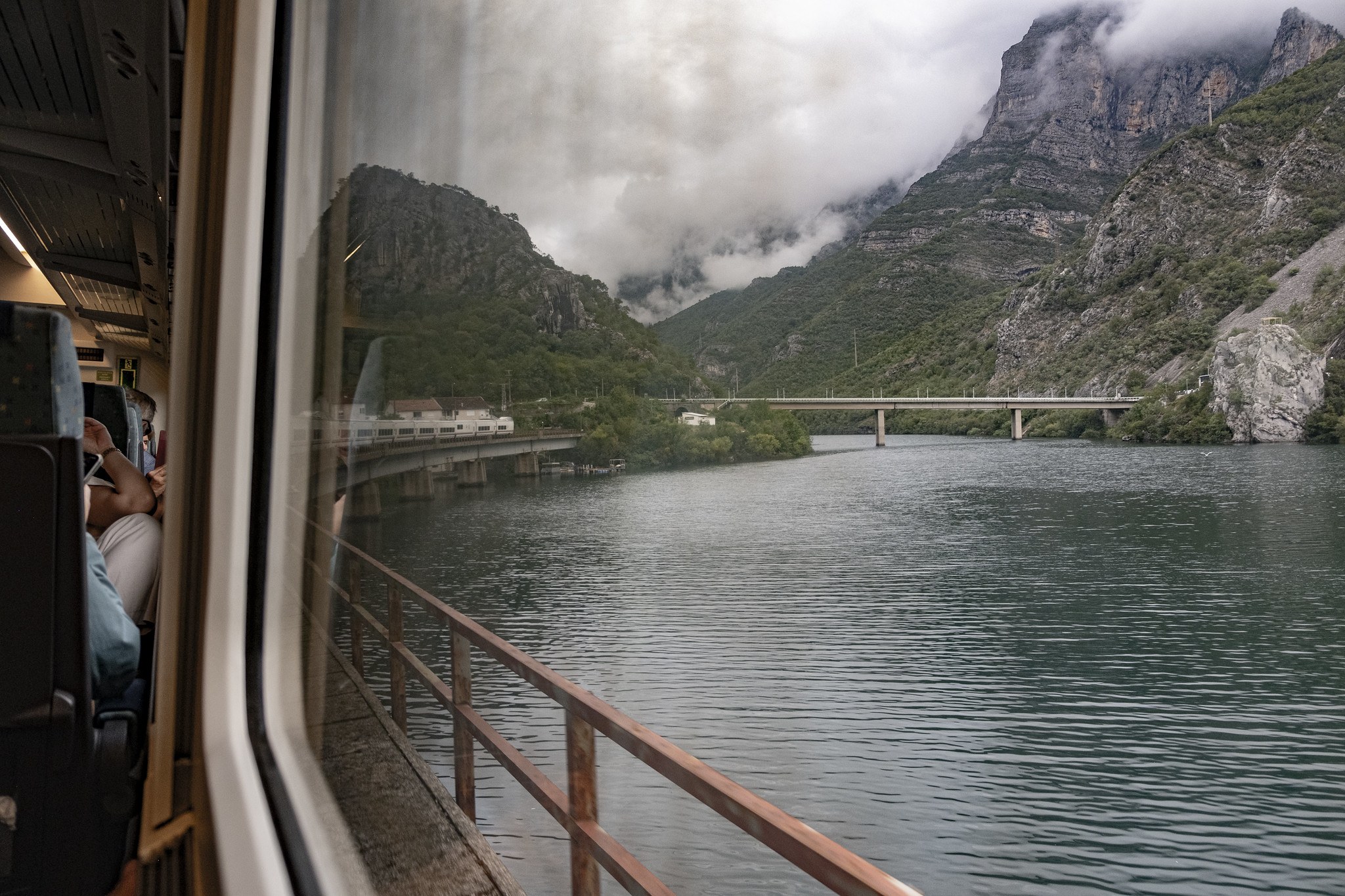
At Drežnica the train crosses a curved bridge at the confluence of the Drežanka and Neretva rivers. Looking back, I can see the rear of the train. After traveling on tiny trains with one or two carriages for the past two days, it’s so good to be on this long and crowded train!
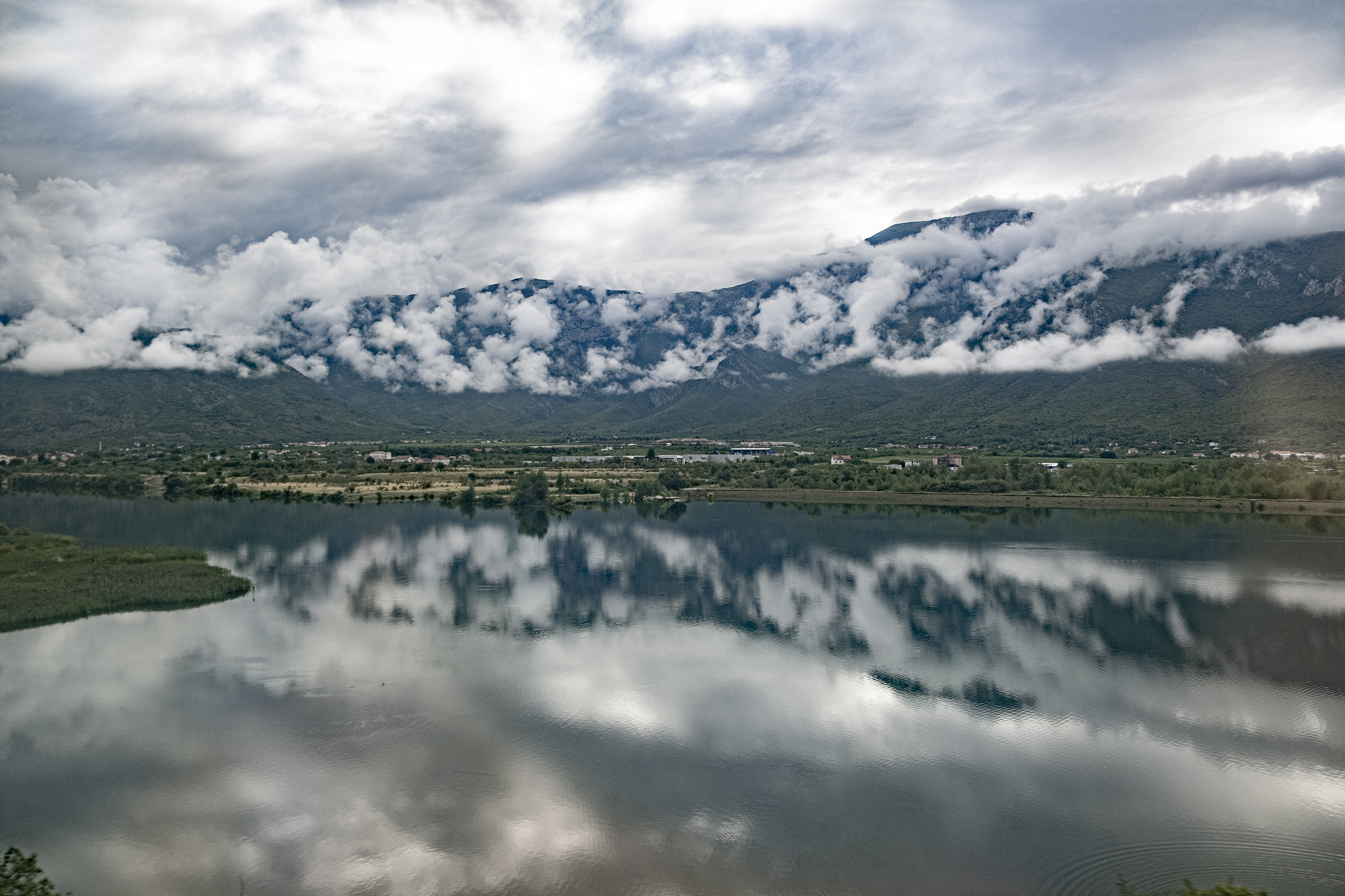
And just like that we enter the Neretva valley near Mostar. Suddenly, the geography completely changes. This fertile valley now looks very Mediterranean as we approach the Adriatic sea.
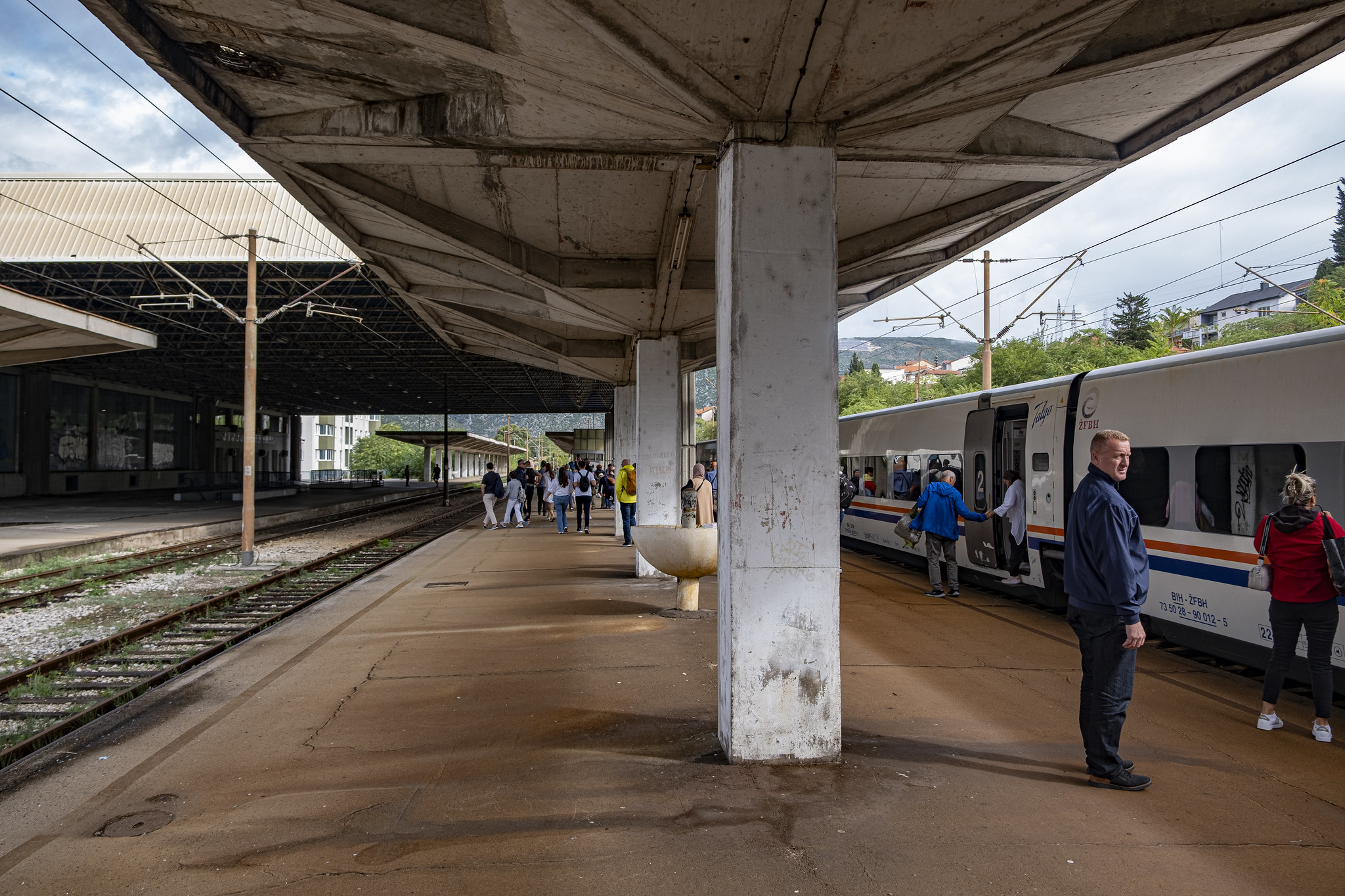
Lots of folks get off in Mostar. This is another oversized station that has seen better days. It now sees only 2 pairs of trains per day.
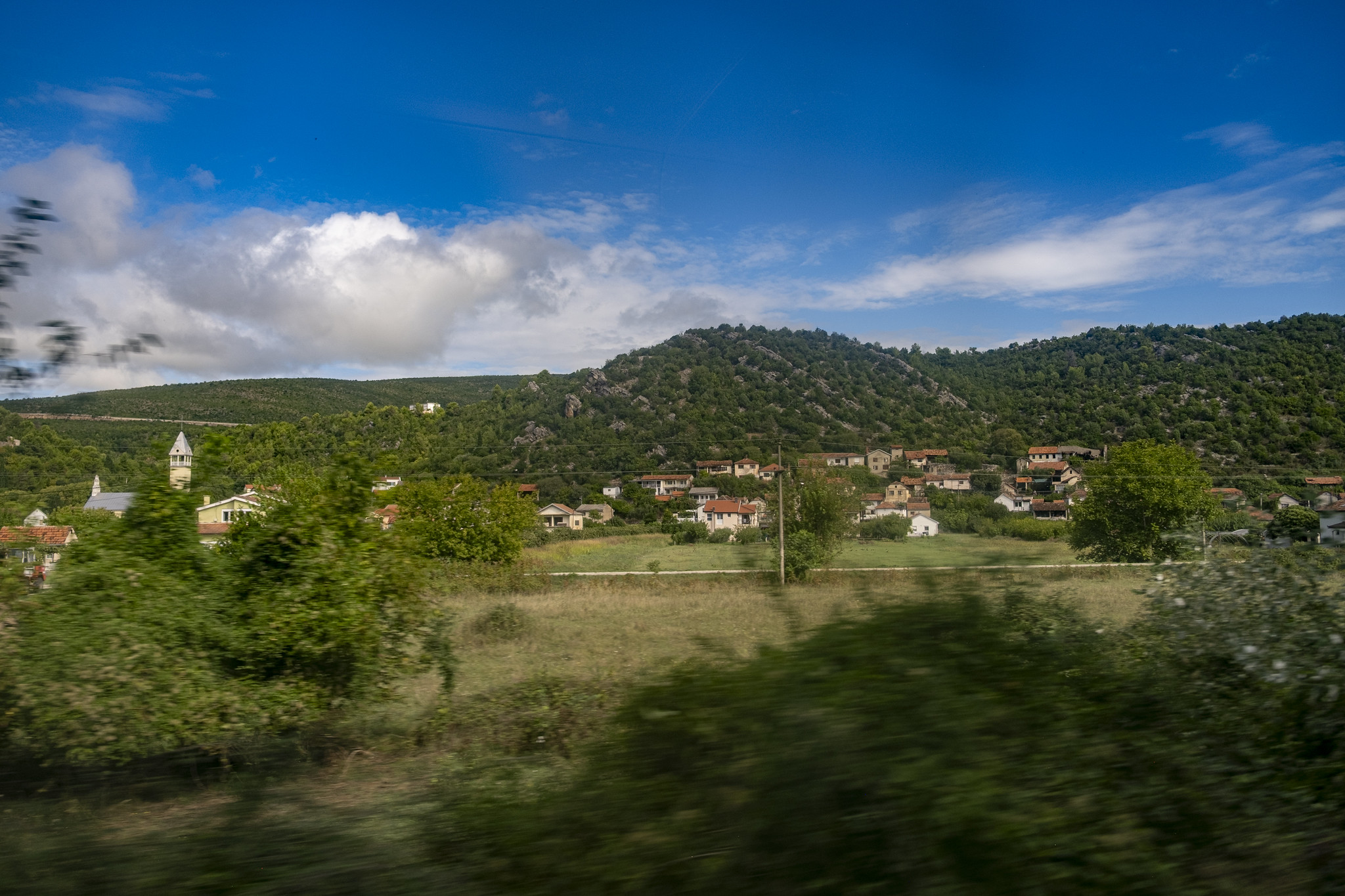
The train covers a little bit more distance to Čapljina where we stop for border control and locomotive change. The conductor walks the train and warns everyone to prepare passports. Through the window I see a HŽPP ASEA locomotive passing us. As I expected, the timetable did not properly account for the time it will take to change the locomotive and perform the BiH border check.
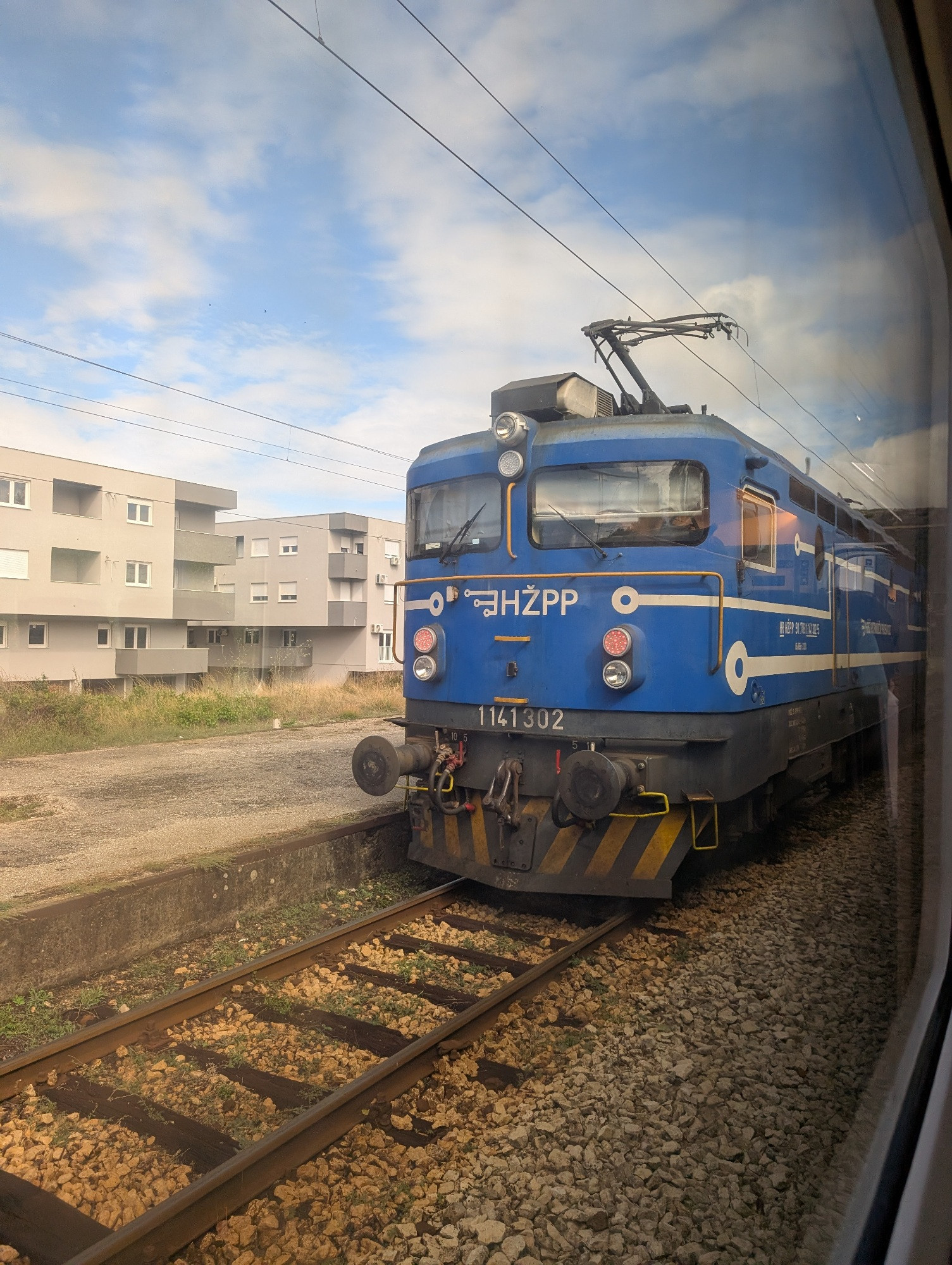
Here we witness the absurd results of war and Yugoslav dissolution. There’s no voltage difference here. The train drivers speak the same language. But they’ll be switching the engine for the next 20 minutes so that the HŽPP locomotive of exactly the same type, built in the same Končar factory as the ŽFBH locomotive, can haul this train for 30 more minutes to Ploče.
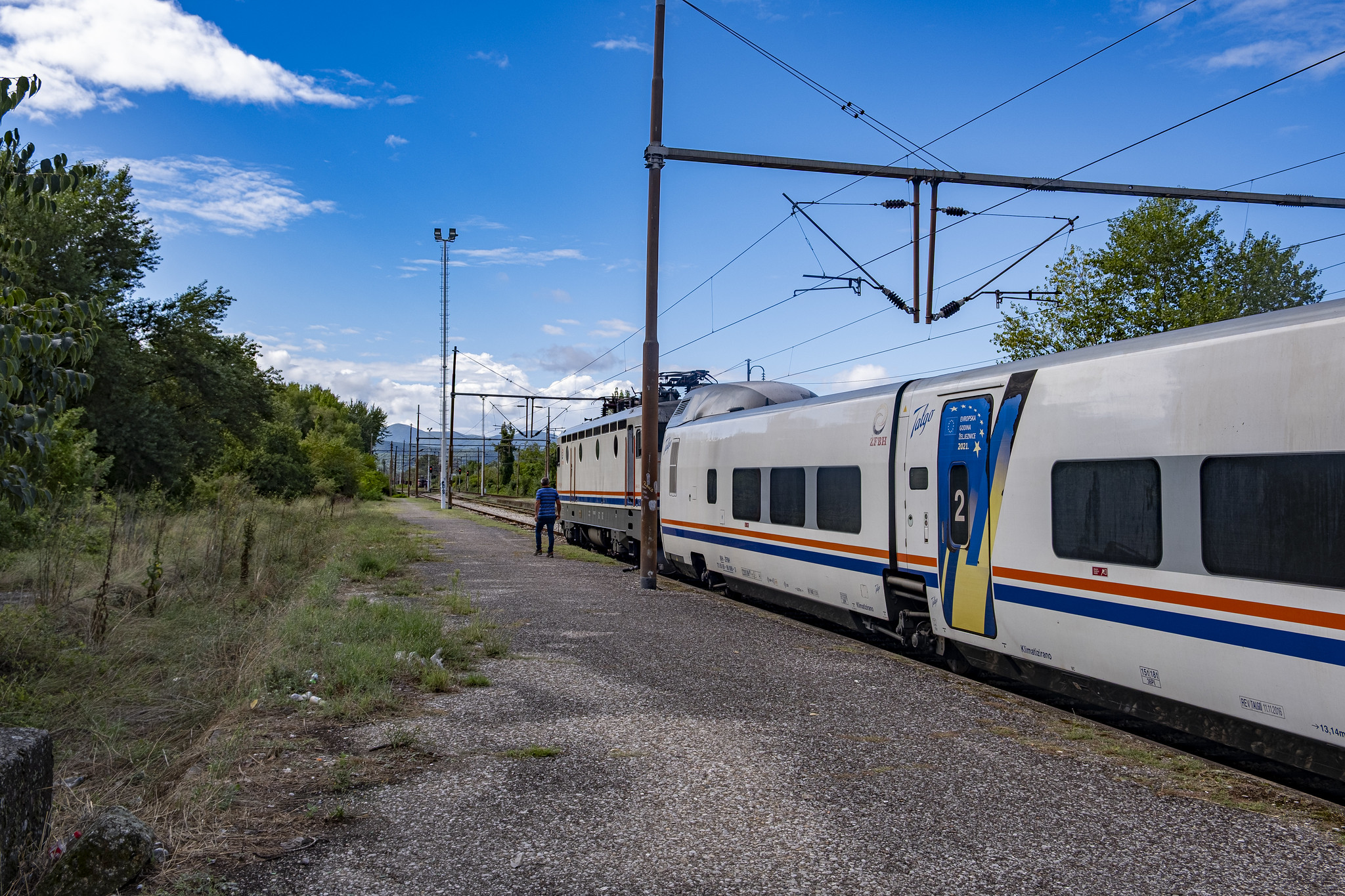
I snap a pic of the ŽFBiH engine getting disconnected before I’m scolded by the conductor to go back inside. “Border!” he yells in English. Obviously only a foreigner would treat this border with such disrespect. By 10:36, our scheduled arrival in Ploče, we’re still in Čapljina. Foreigners are getting impatient. A woman wants to go to a cafe next to the train to buy some water. “Police control!” yells the conductor. She goes back to the train. The Bosnians on the train are commenting on how chaotic the foreign woman is, while waiting patiently for their documents to be checked. I’m reminded of Dubravka Ugrešić writing about how the privileged Westerns cross borders vs. the obedient and less fortunate “Others”. The contrast between the beautiful train ride and the absurdity of this situation is quintessential post conflict Balkans. We haven’t even reached the Schengen border itself. The train finally departs Čapljina at 10:49, 13 minutes after we were supposed to be in Ploče.
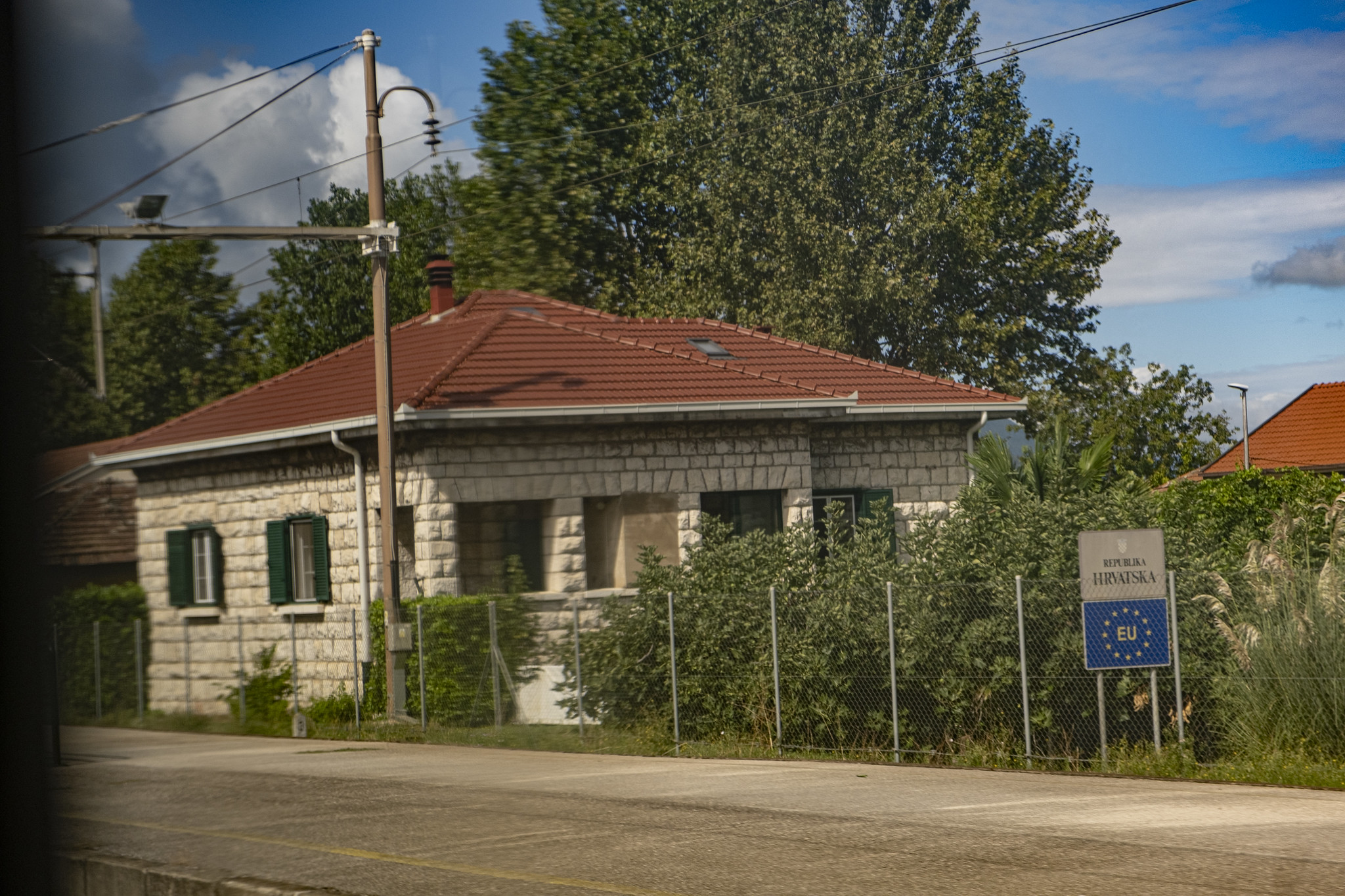
Luckily, the Croatian border check at Metković takes only 10 minutes and we continue to our next and final stop in Ploče. We’re now in the Neretva river delta. A fertile, green valley. In Metković I snap a pic of a beautiful COVID-19 mural showing a doctor with angel wings holding up the world.
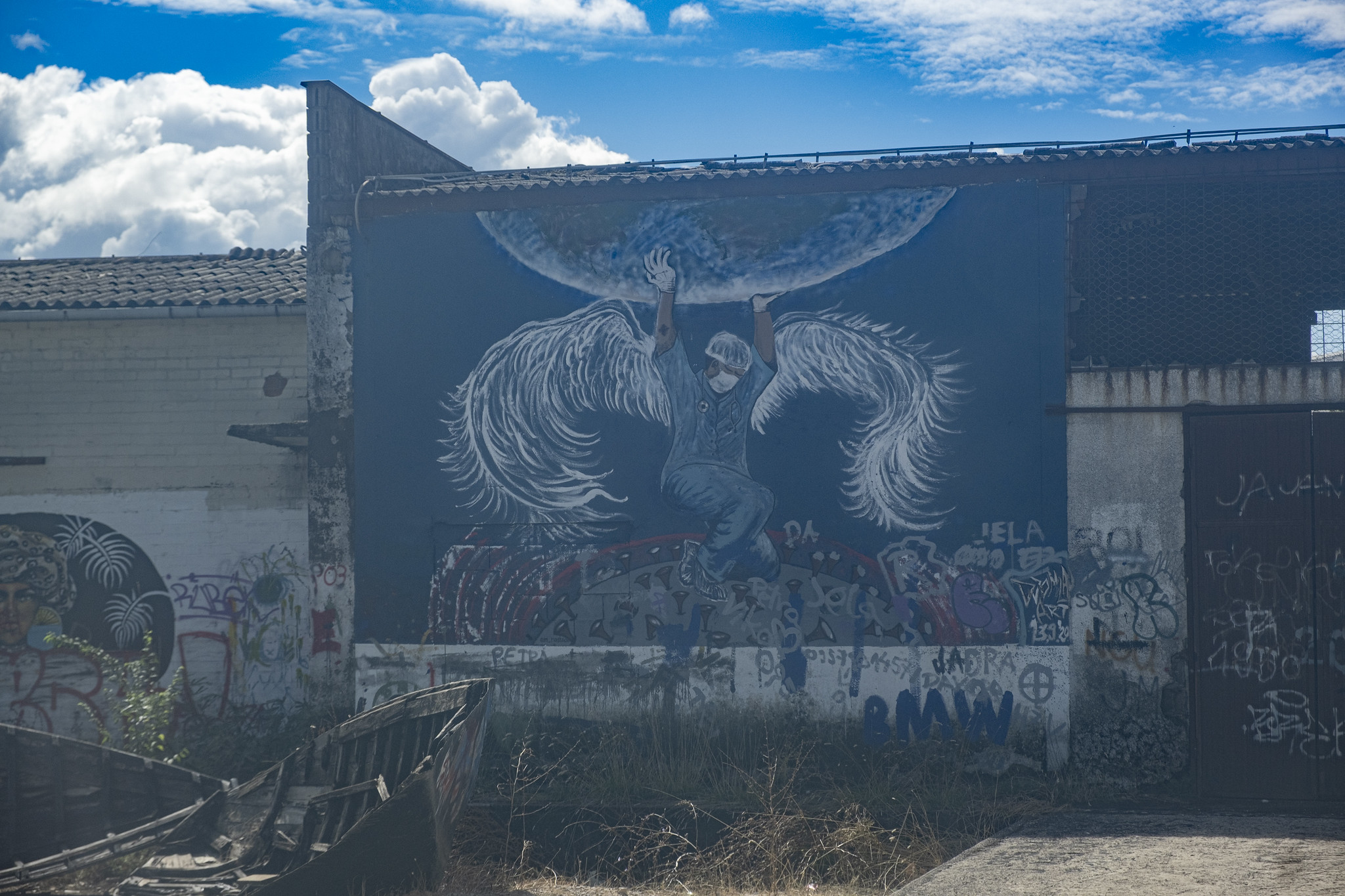
The Neretva is now calm and peaceful, basking in the sun. It’s hard to believe this is the same river that was surrounded by the impossibly high, sharp rocks.
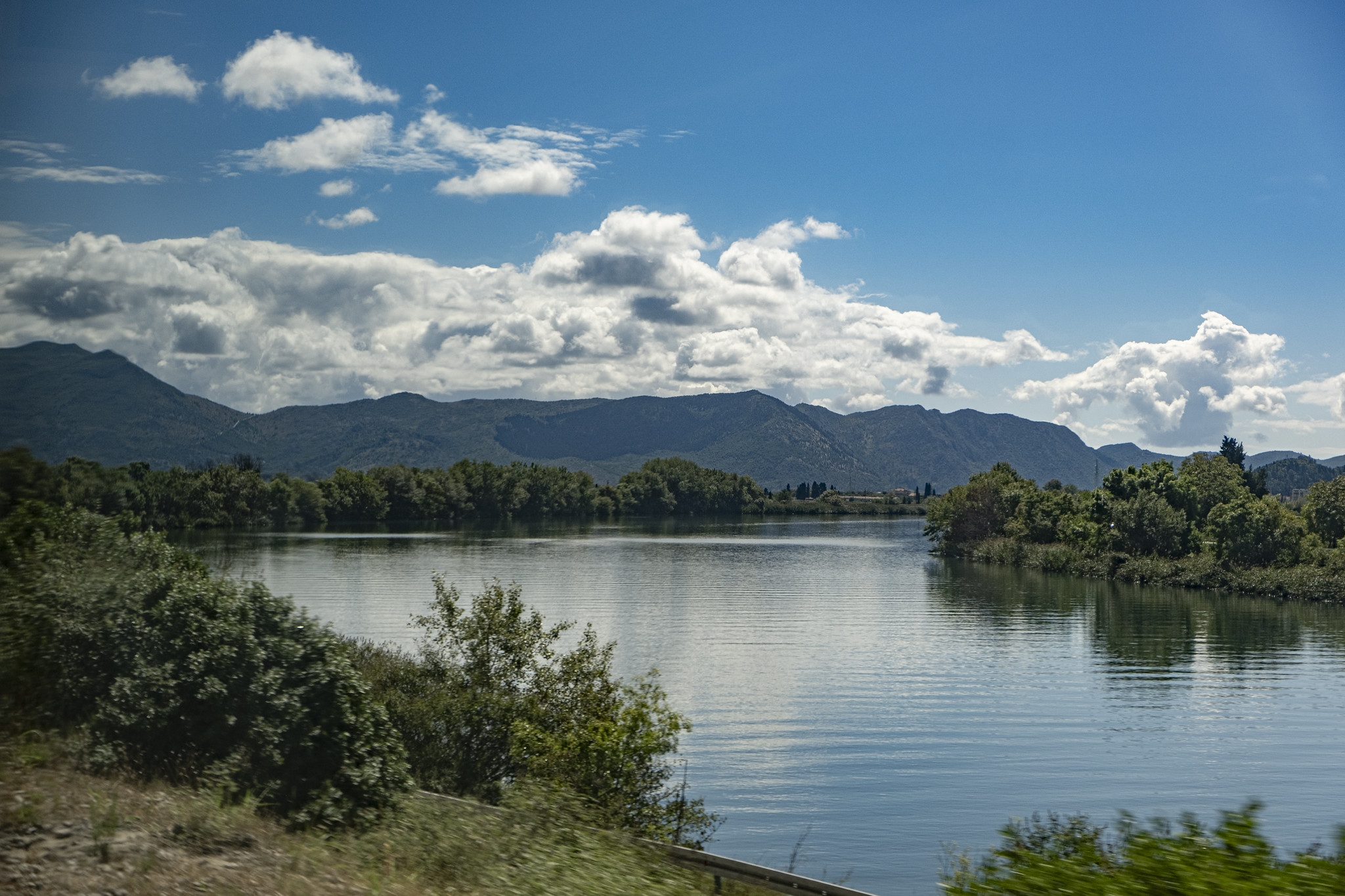
And the train finally rolls into Ploče at 11:31, with a 55 minute delay. It’s the only passenger train in the station, and it’s the last passenger train that will service this station this year. Ploče’s only rail connection is to Sarajevo, and this train won’t run again until summer 2026. It’s nice to see happy folks getting off the train. Some have family and friends waiting for them. People are hugging and kissing. Most will likely travel further, to small towns and islands on the Adriatic. A few may be doing a day trip and coming back to Sarajevo in the afternoon.
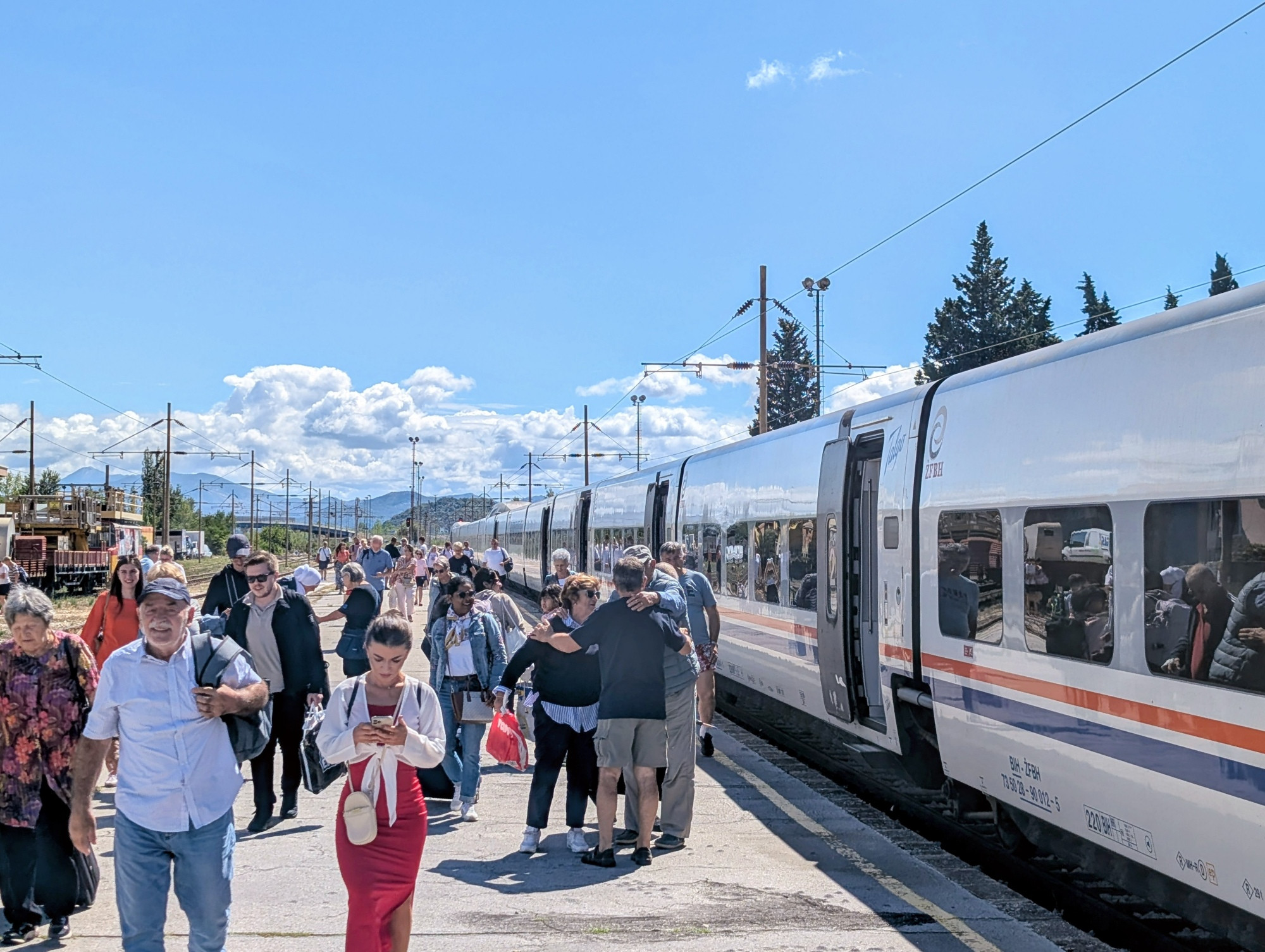
Walking on the open platform, I can finally appreciate the size of this train. I think about how it’s ultimately a shame it’s used on this short, tourist service. Yes, it’s nice to travel in these well maintained, newish cars on this scenic line. But these Talgo trainsets should be providing service from Sarajevo to Banja Luka and Zagreb and perhaps even beyond, to Ljubljana and Villach. I think about the lost opportunities, and I think about how recent it was in the grand scheme of things that I traveled to Sarajevo by train without a fuss, without needing two days, four trains, bikes and taxis.
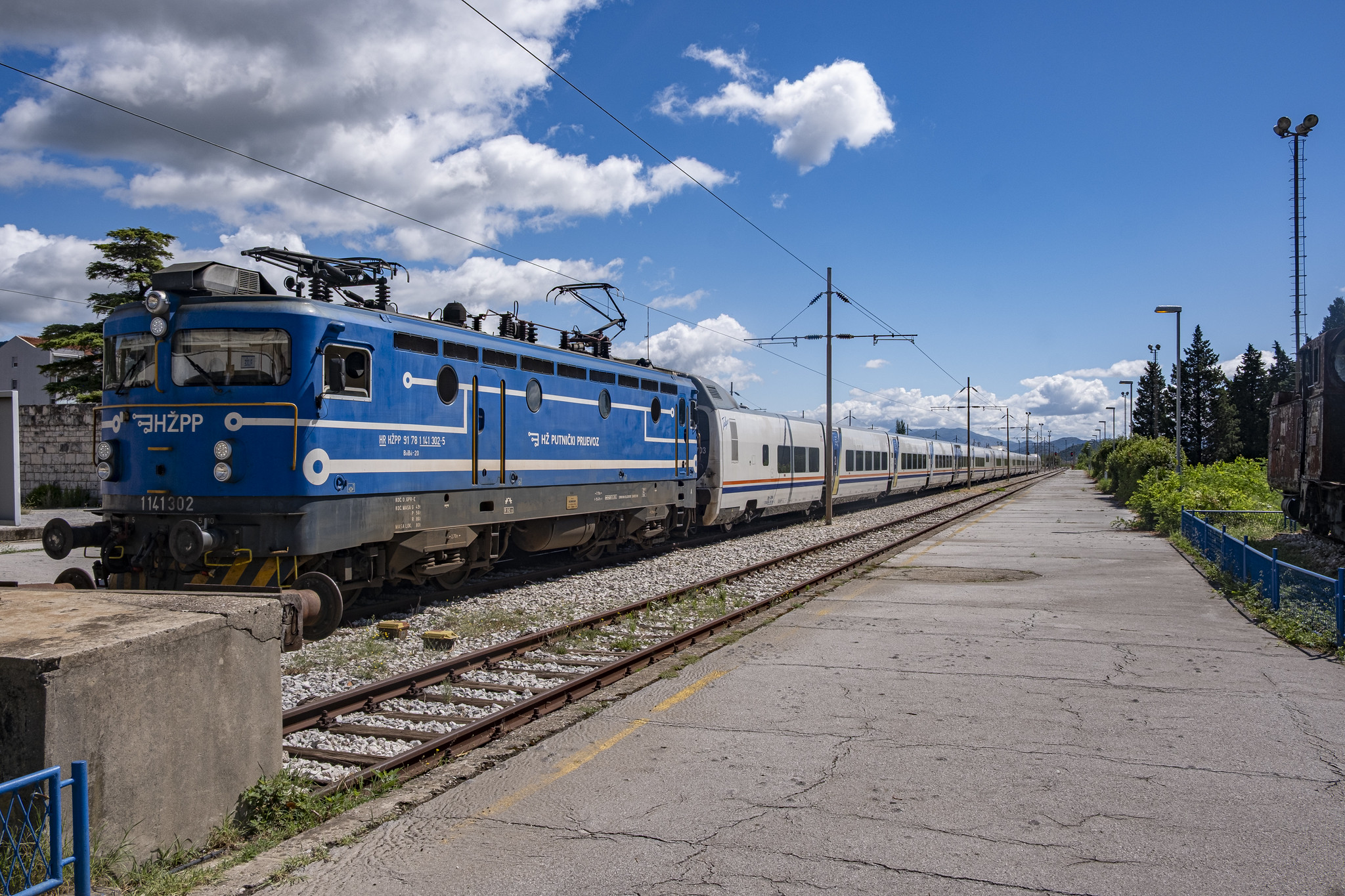
As I grab some food and take a dip in the Adriatic, I’m both happy and thankful I got to do this trip, but I’m also profoundly sad. I know that “extreme” train trips like this aren’t really a solution for anything. When nerds like me “hack” our way through disconnected rail lines by riding bikes or taking cabs, we do it for fun, but regular folks cannot travel like this. Regular folks will find a way if they can afford it, driving cars, taking planes or maybe riding buses if they are available. But many will just stay home, and they won’t get to make connections that used to be possible back when trains provided predictable, consistent service.
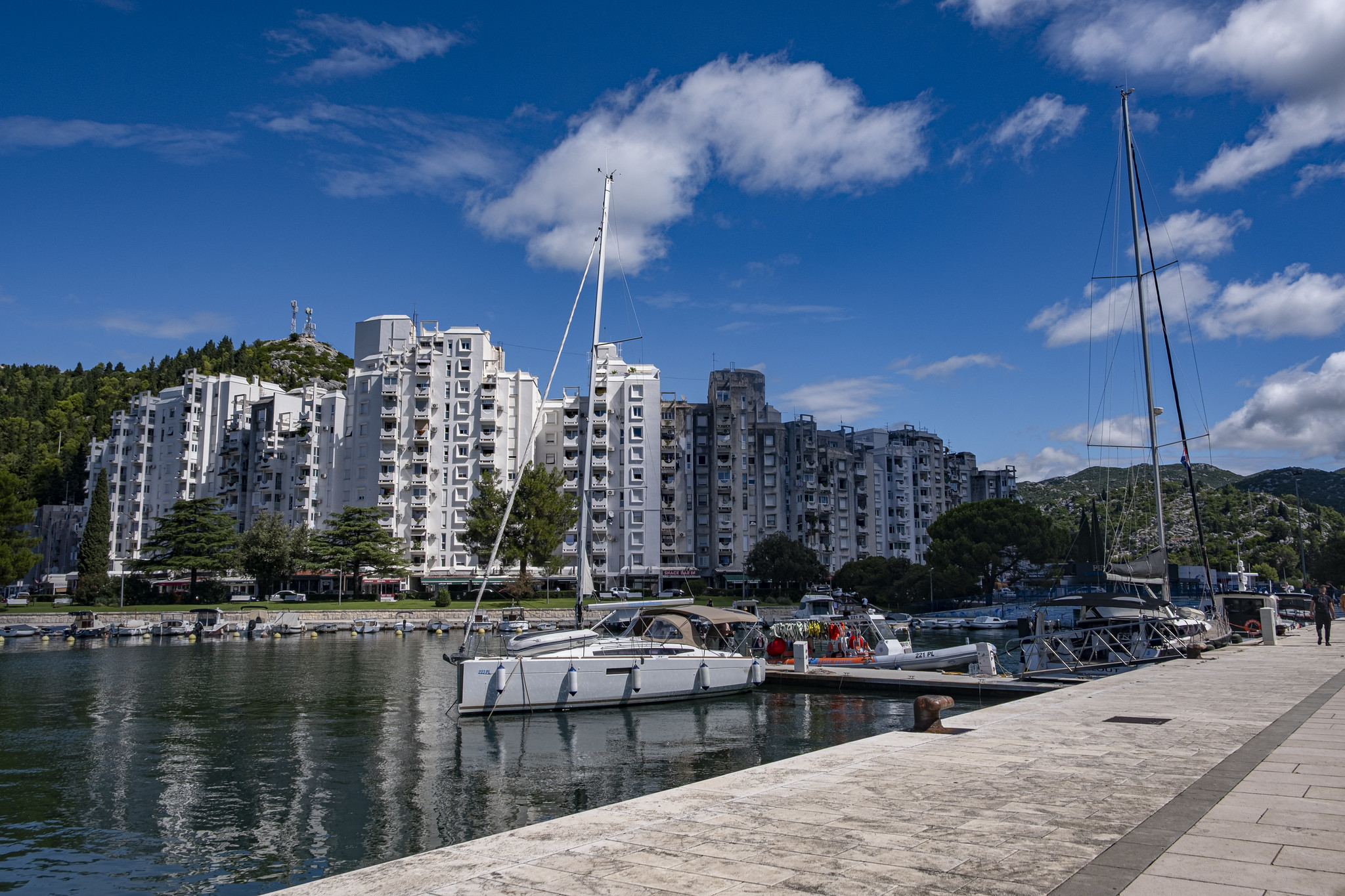
Ploče is a great example as to why we need to maintain these connections. This small industrial town wouldn’t exist without the railroad to Sarajevo. The railroad and the port of Ploče were built in the 1960s to support manufacturing and other industries in Bosnia and Herzegovina. When the 2024 floods washed away the railroad near Jablanica, shipping to and from Ploče almost completely stopped. Despite borders and politics, everyone is connected.
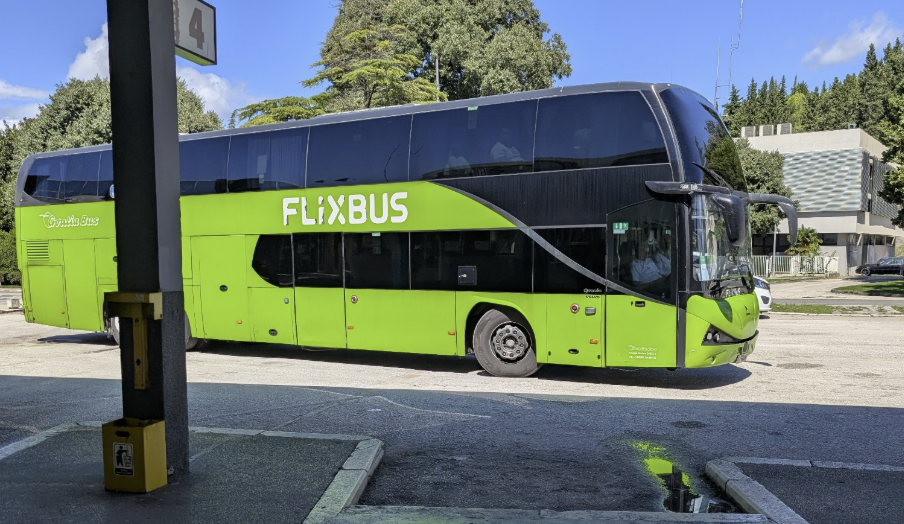
While waiting for my Flixbus back to Zagreb, I tried to make some sense of this journey. The journey from Zagreb to Ploče via Banja Luka and Sarajevo took 51 and a half hours. But it was beautiful and fascinating. It took me through some new places and back to some old ones. My “hacks” that enabled this journey weren’t all that complicated, and riding my bike next to the Una river was a special treat. The long connections let me see different places and take them in as more than just names on a map. But we need to be honest – this trip was a luxury. A luxury in time, and money. I spent €43 on train tickets, €19 on a cab from Doboj to Maglaj and €90 on hotels, plus food.
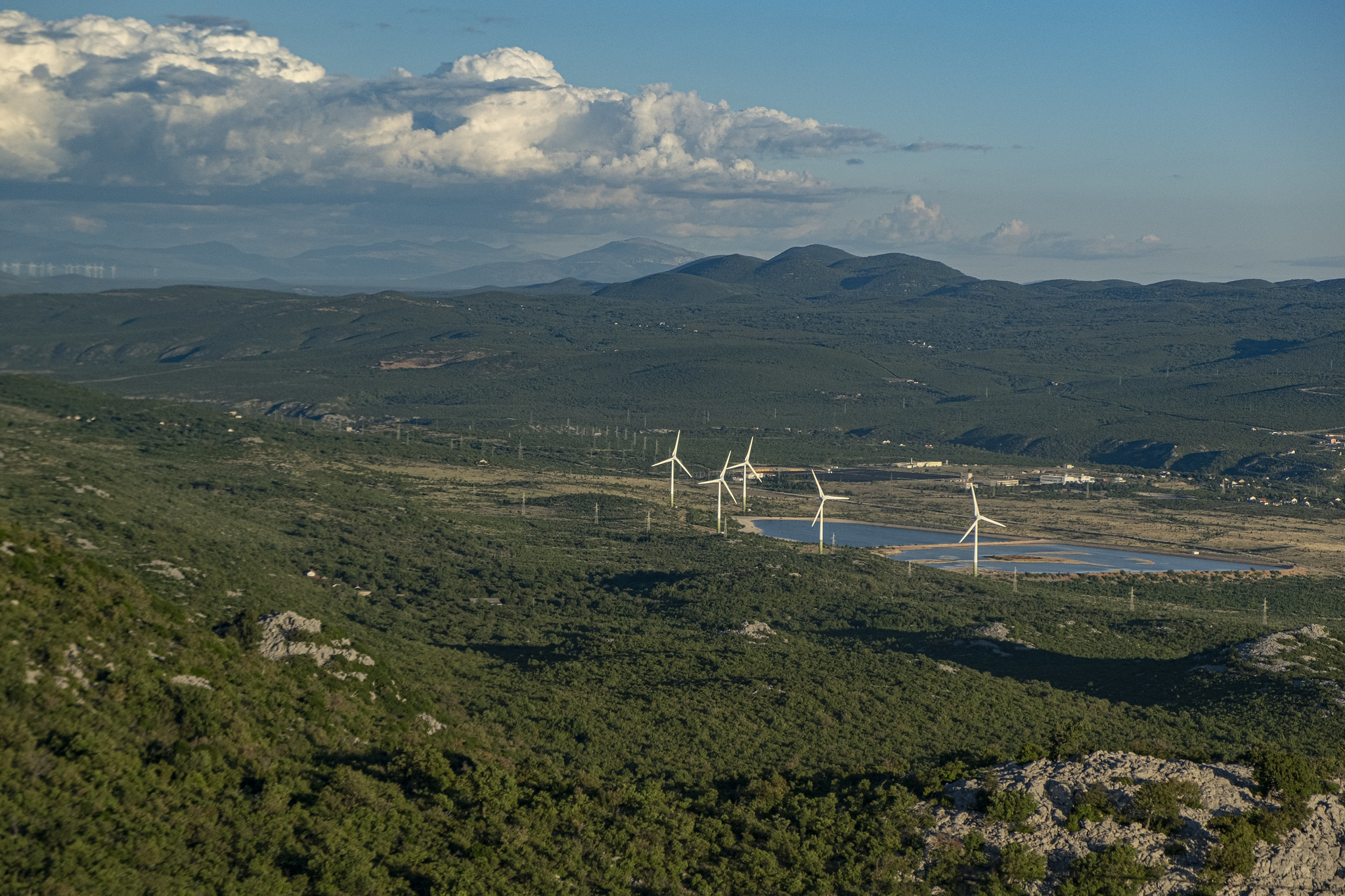
What should happen here? It’s dead simple. Run this whole route with the same train, like it used to run for most of the 49 odd years this railroad has been in operation. There’s really no need to reinvent the wheel. It’s been over a decade since Bosnia and Herzegovina was disconnected from international train routes. Explanations cite vague “complications”, but this journey shows that the only complications are malicious and incompetent authorities. The infrastructure is fully functional.
While I was having coffee at Sarajevo station, a group of youths were concocting a plan how to get to Doboj. They arrived to the same conclusion as me, planning to somehow get a taxi from Maglaj. That is outrageous. These boys were probably in first grade when the last international train left Sarajevo, and they have already grown up completely disconnected not just from the rest of Europe, but also from half of their own country. Everyone deserves better connections, young folks especially.